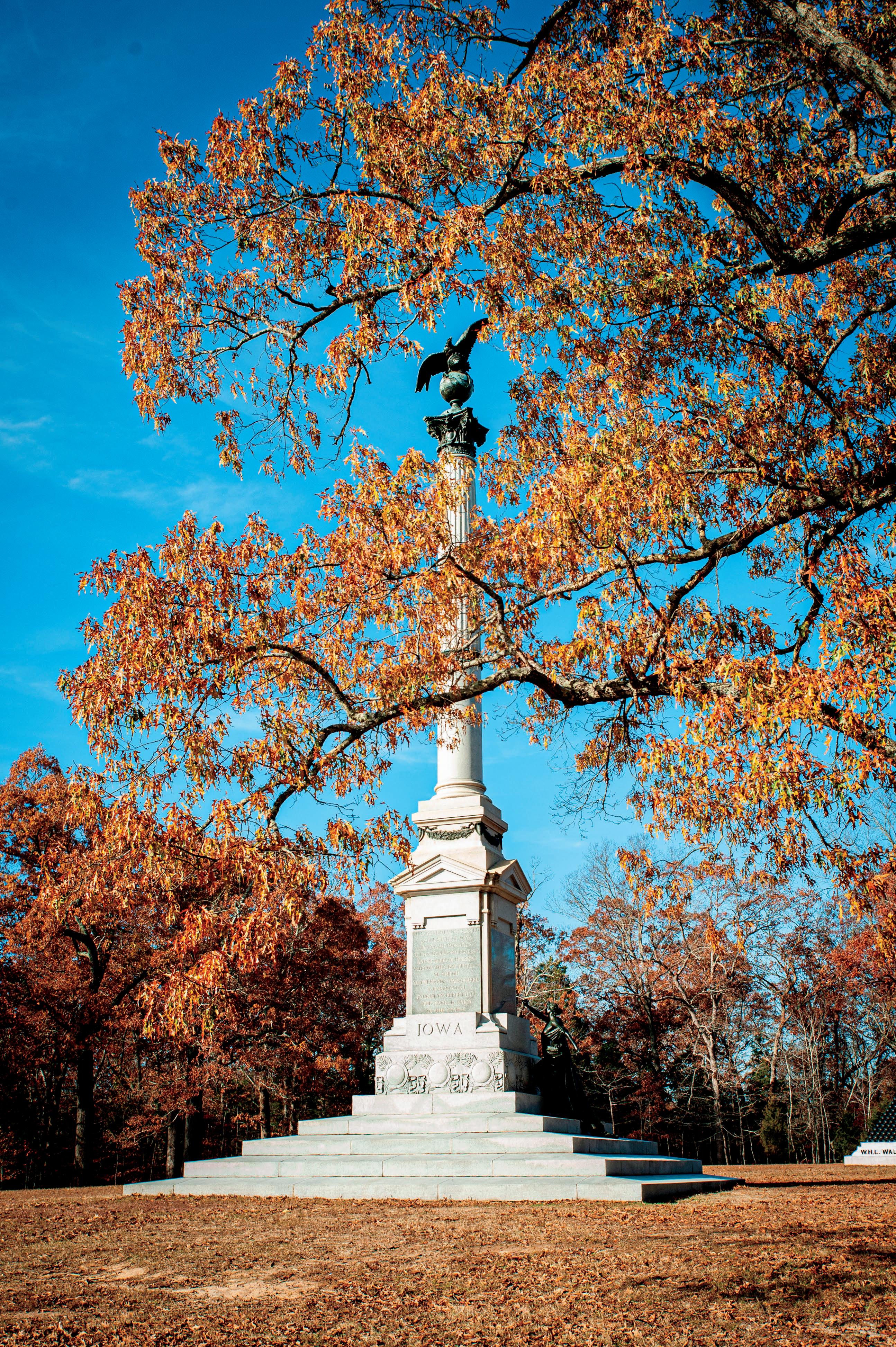mcnairy






















H u f f o f H u f f o t o
C E O
M a r k O ' M e l l
E x e c u t i v e D i r e c t o r
C h a m b e r a n d T o u r i s m
J e s s i c a H u f f
D i r e c t o r
M e m b e r S e r v i c e s
J o s h W a f f i r d
2 0 5 W e s t C o u r t A v e n u e
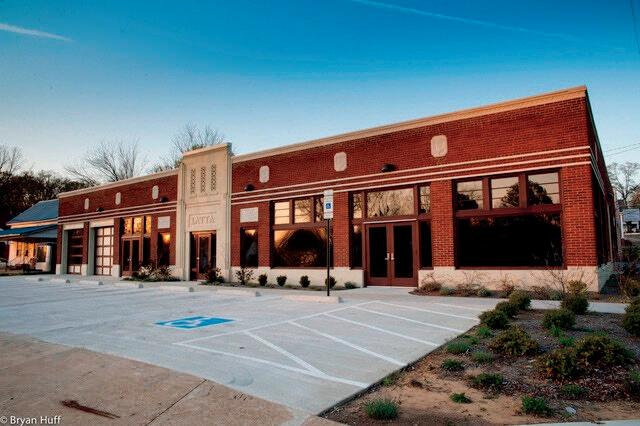
S e l m e r , T e n n e s s e e 3 8 3 7 5
+ 1 - 7 3 1 - 6 4 5 - 6 3 6 0
m c n a i r y c o m
m e e t m c n a i r y c o m
i n f o @ m c n a i r y . c o m
M C N A I R Y G O V E R N M E N T
U . S . S e n a t o r s L a m a r A l e x a n d e r
2 0 2 - 2 2 4 - 4 9 4 4
M a r s h a B l a c k b u r n
2 0 2 - 2 2 4 - 3 3 4 4
U . S . R e p r e s e n t a t i v e
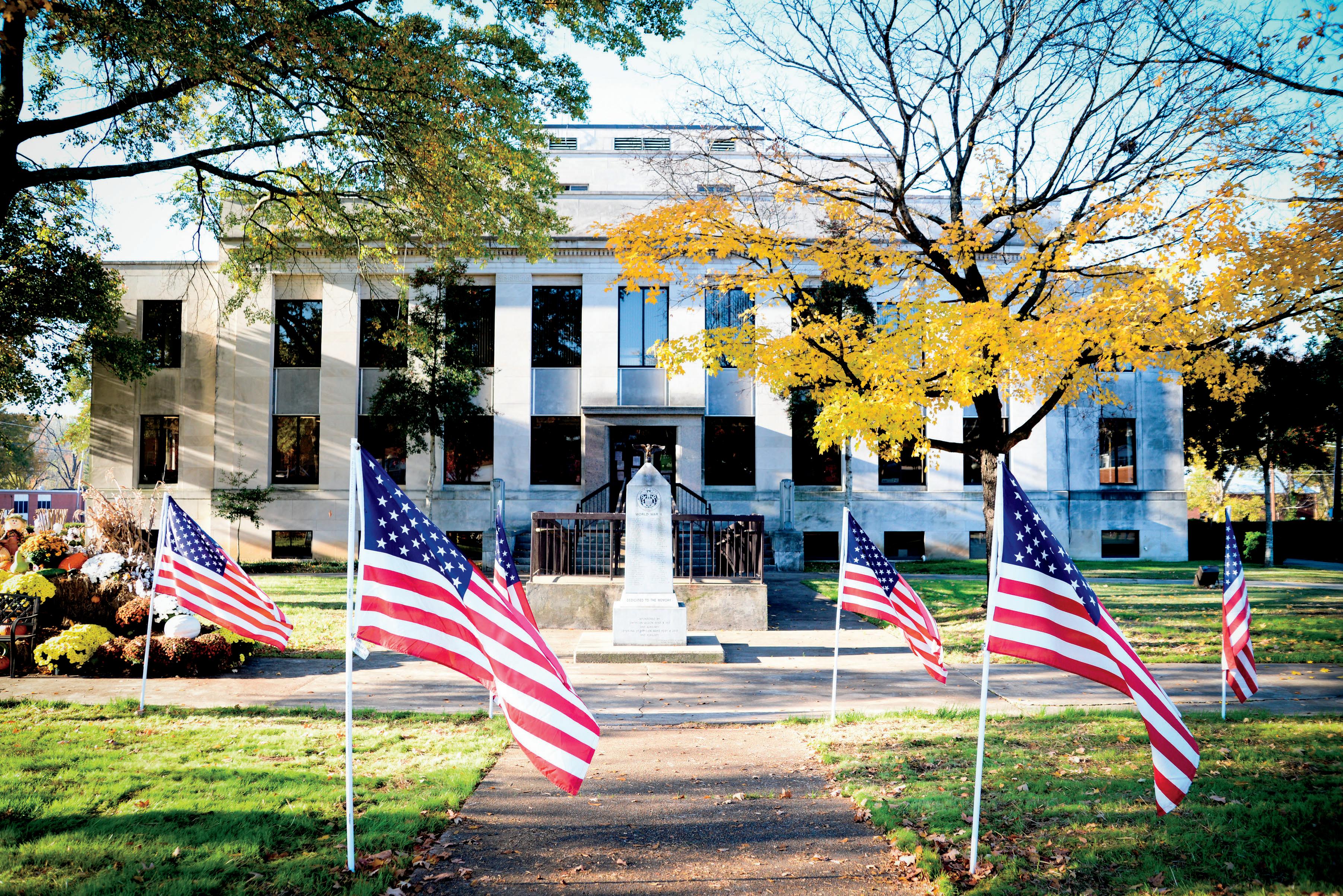
M a r k G r e e n ( D i s t r i c t 7 )
2 0 2 - 2 2 5 - 2 8 1 1
S t a t e S e n a t o r
P a g e W a l l e y ( D i s t r i c t 2 6 )
6 1 5 - 7 4 1 - 2 3 6 8
S t a t e R e p r e s e n t a t i v e R o n G a n t ( D i s t r i c t 9 4 )
M a y o r s L a r r y S m i t h - M c N a i r y C o u n t y
D a v i d L e c k n e r - A d a m s v i l l e
G a r y B i z z e l l , J r . - B e t h e l S p r i n g s
-
-
J e s s i e R o b b i n s - E a s t v i e w
7 3 1 - 6 4 5 - 3 4
R o b e r t H e a t h c o c k I I I - F i n g e r
7 3 1 - 9 3 4 - 4
K e i t h R i n e h a r t - G u y s
7 3 1 - 2 3 9 - 4 7 0 0
A n t h o n y S m i t h - M i c h i e 6 6 2 - 4 1 5 - 7 0 5 4 D a n n i e K e n n e d y - M i l l e d g e v i l l e
G e o r g e A r m s t r o n g - R a m e r
7
S h e r r y I n m a n - S e l m e r
7 3 1 - 6 4 5 - 3 1 4 1
L a r r y R u s s e l - S t a n t o n v i l l e
7 3 1 - 6 4 5 - 7 7 7 0
M c N a i r y C o u n t y C o u r t h o u s e
7 3 1 - 6 4 5 - 3 5 1 1 O f f i c e o f C o u n t y A r c h i v e s
7 3 1 - 6 4 5 - 7 0 9 5
I r v i n g M e e k J r . P u b l i c L i b r a r y - A d a m s v i l l e
7 3 1 - 6 3 2 - 3 5 7 2
J a c k M c C o n n i c o M e m o r i a l L i b r a r y - S e l m e r
7 3 1 - 6 4 5 - 5 5 7 1
M c N a i r y C o u n t y B o a r d o f E d u c a t i o n
G r e g M a r t i n - D i r e c t o r o f S c h o o l s
7 3 1 - 6 4 5 - 3 2 6 7
M c N a i r y C o u n t y H e a l t h D e p a r t m e n t

The University of Tennessee at Martin established an extension campus in Selmer in 1998. Since then, the UTM McNairy County/Selmer Center offers a full rotation of general education and undergraduate courses to support more than 80 specialized programs The center can design curricula to meet the needs of local businesses and industries (731) 646-1636 www utm edu



Tennessee College of Applied Technology prepares individuals for high skill, high wage, high demand careers in fifteen programs of study Career training for Business Systems Technology, Collision Repair Technology, Computer Graphics Design, Computer Information Systems, Computer Information Technology, Drafting & CAD Technology, Electronics Technology, Health Information Technology, Heating, Ventilation, Air Cond./Refrigeration, Industrial Electricity, Industrial Maintenance, Machine Tool Technology, Practical Nursing, Technology Foundations, Farming Operations Technology and, Welding Technology. (731) 632-3393 www.TCATcrump.edu
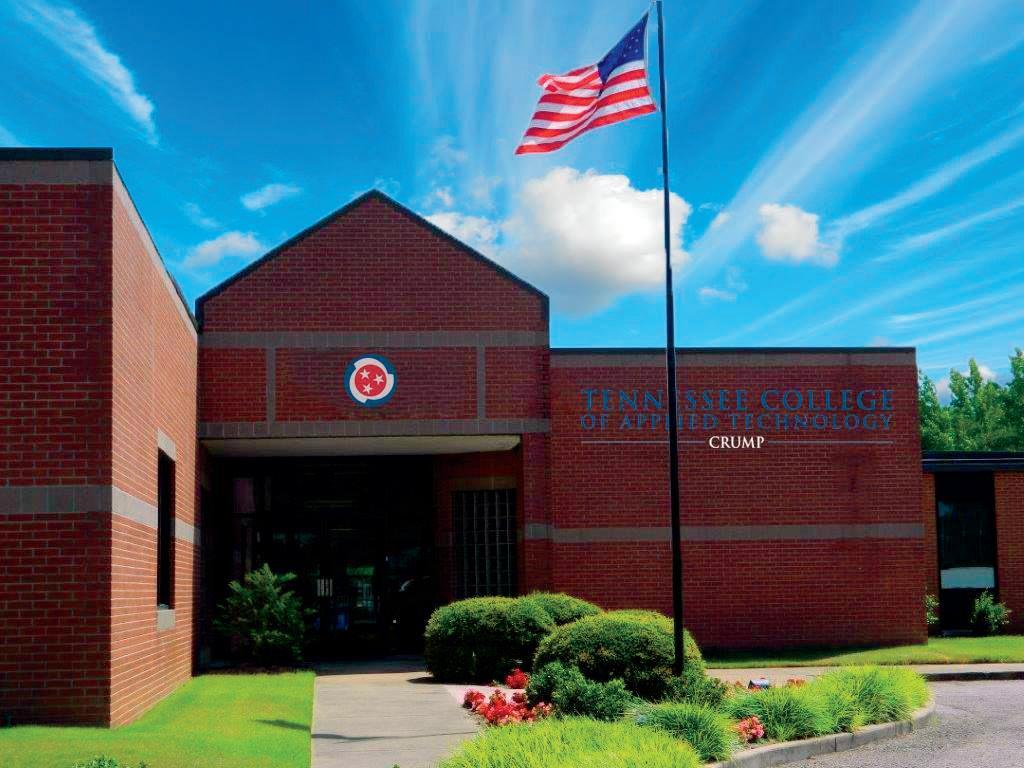
Within the 232-acre grounds, located at 2983 Hardin Graveyard Road in Adamsville, lies one of the most important fossil sites in North America. It was acquired by the Pink Palace Family of Museums in 1988 and as of May of 2020 is currently operated by the University of Tennessee at Martin. The creek bed of Coon Creek contains a treasure load of 70 million year old marine fossils left behind when the waters of the Gulf of Mexico receded from the area. The site attracts both youth and international scientists. For more information please contact the UTMartin, Selmer/McNairy County Center. (731) 646-1636
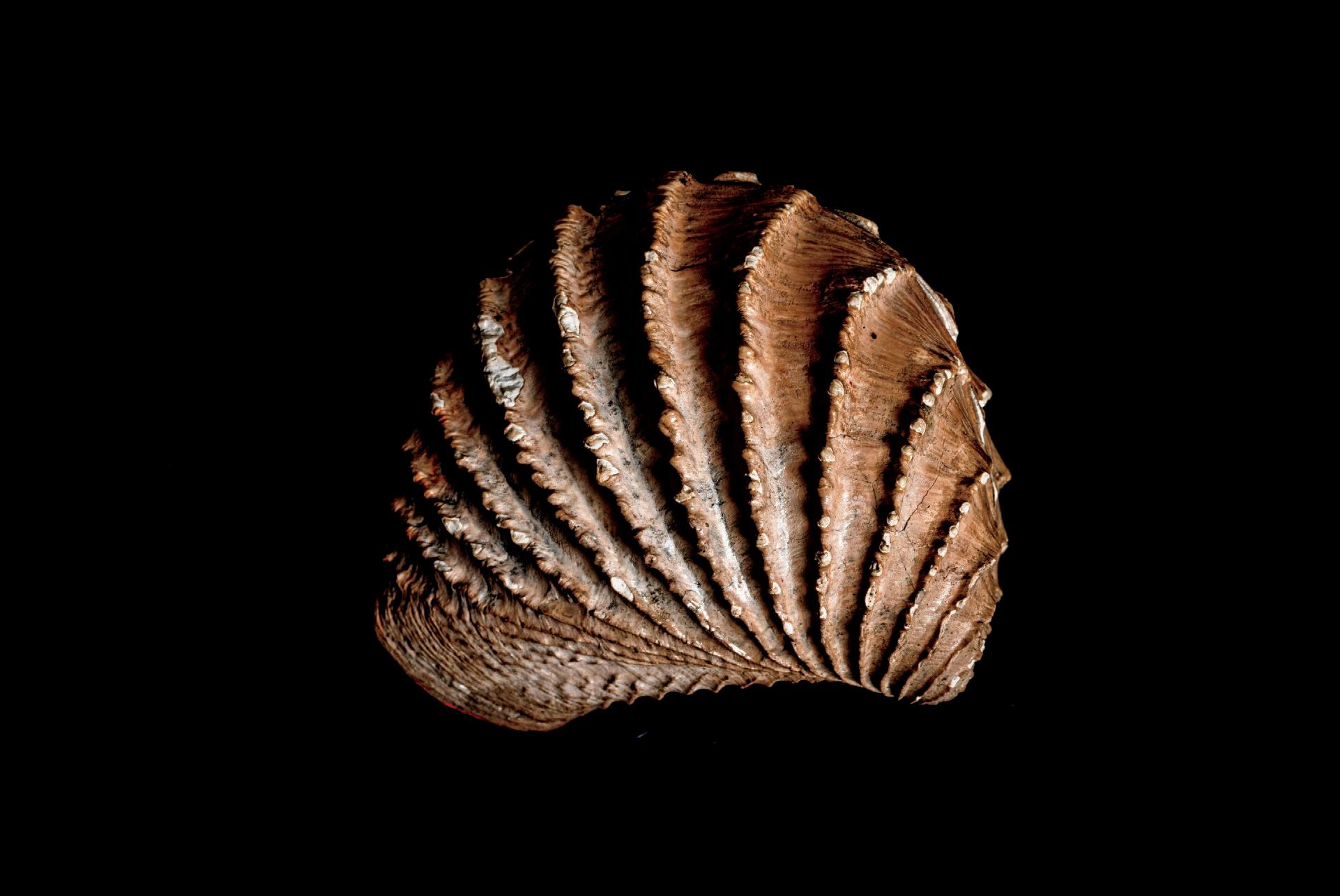
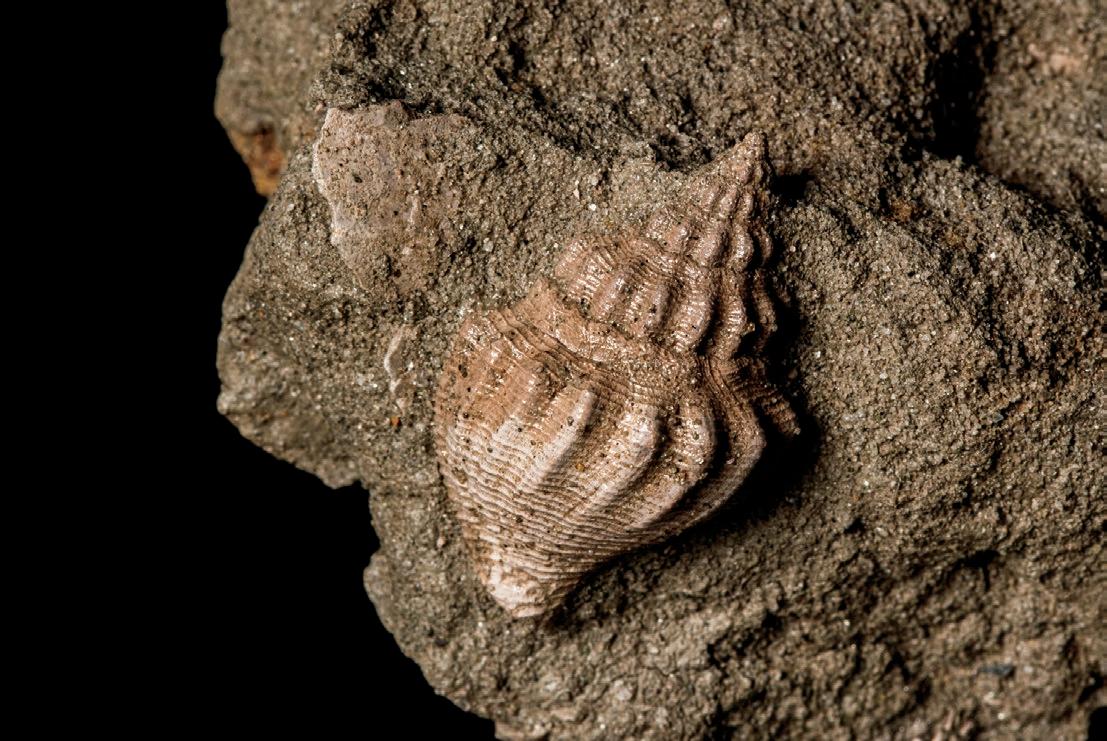

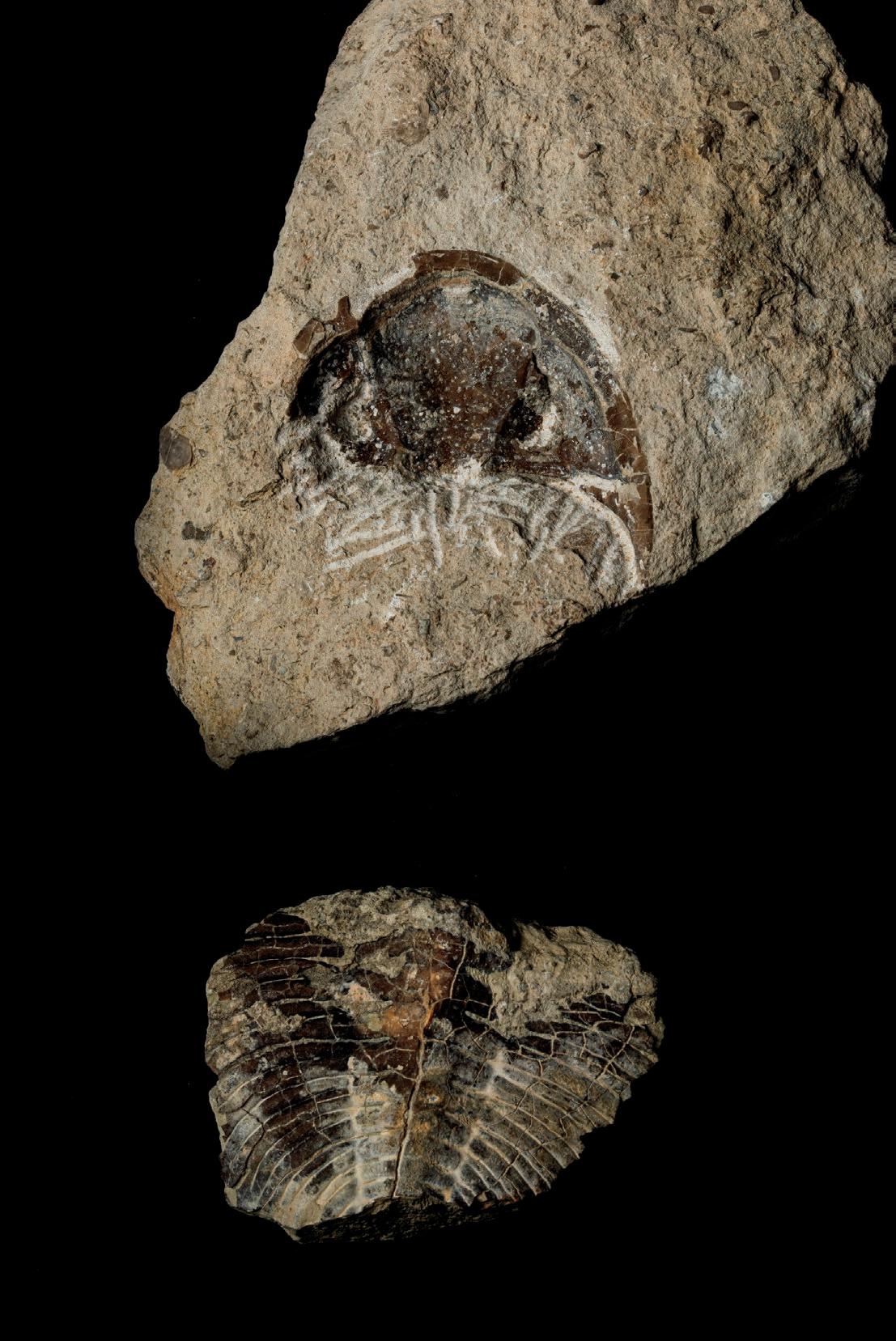
www.utm.edu



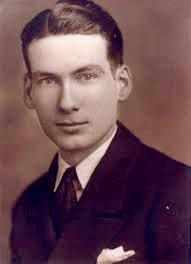
The Jack Boone Literary Preservation project is an effort to preserve the "lost" works of Tennessee writer Jack Happel Boone (1903-1966). His life was full of accomplishments hindered by frustration and circumstance. Now more than 50 years after his death, his long-hidden works are emerging for a new audience to experience his distinct Southern writing style
Jack Happel Boone was born in 1903 in Gibson County, Tennessee He spent his youth in Chester County, Tennessee, and attended public schools in Henderson. Educated at Memphis State College and Vanderbilt University, he began writing professionally as early as 1932 Between 1932 and 1944, he was published in such publications as Prairie Schooner, Household Magazine, Southern Review, A Vanderbilt Miscellany, and Story He taught at such prestigious universities as Clemson, Vanderbilt, Georgia Tech, Mississippi State, and Rensselaer Polytechnic Institute, as well as lectured at the University of Iowa
Boone wrote regularly from 1932 until the mid1950s His novel, Dossie Bell is Dead received critical acclaim after its publication in 1939. Woods Girl is the long-buried sequel to that novel. Boone wrote most of his works in a manner that would reflect the language, speech, and tradition of his subjects. His works provide a glimpse of backwoods and rural life in West Tennessee in the 1930s and 1940s including many archaic customs held over from far earlier times The majority of his works are set in rural West Tennessee in the area commonly known as The Nation (McNairy County).
Boone remained primarily in Chester County until his death in 1966.


The night was quiet along the Tennessee River as the mounted Union officer stood staring at the waiting gunboats He looked behind him at the fifty-five mounted men he was about to lead across the river. They were good men and above the criticism lately leveled at them because of his own commanding officer. In fact, this officer about to lead these men on a daring raid on the Perry County, Tennessee courthouse, Lt Colonel William K M Breckenridge, had little use for his own commander, also their commander, Colonel Fielding Hurst Only two months prior, in late March 1863, Hurst had arrested him and for no other reason than he felt threatened by a more seasoned and principled officer Breckenridge tried diligently to be just that.
Now, here he was, once again leading troops in the field while Hurst’s whereabouts could only be conjecture Maybe he was raiding plantations, sleeping in his featherbed at his own home back in Purdy or just scouting for his next ill-gotten gain He had his reasons for entering this damnable war and Breckenridge had his own Breckenridge was a professional soldier and his cause was the Union cause, that and that alone. Hurst and his cronies had spent most of the last year stealing horses, raiding farms and houses and enriching themselves Breckenridge had spent most of the last year building the United States First West Tennessee Cavalry into a functioning and legitimate military regiment
Now, he prepared to lead his men again in the pursuit of weakening the Confederate cause in the area of the Tennessee River. From August to September 1862, Breckenridge had traveled from West Tennessee to Washington, D.C., St. Louis, Missouri, Columbus, Kentucky and various places in between, in his efforts to outfit, equip and raise the regiment While he worked to build the unit, Hurst was busy getting himself arrested for burning the houses of local citizens The men of the new unit respected Breckenridge and expressed extreme frustration at the behaviors of Hurst and his cronies The unit’s senior professional soldier, Breckenridge was forced to spend time and energy on more than one occasion attempting to convince the enlisted men to remain in the ranks and not to desert the regiment


Breckenridge’s story almost wasn’t told. He kept a record of his wartime activities, correspondence and observations in his journal, but that journal disappeared into private hands after his death in October 1863 It didn’t see the light of day again until 2012, some 149 years later. During that nearly 150year period, the story of the United States First West Tennessee Cavalry, later known as the U S Sixth Tennessee Cavalry, was told from the perspective of Fielding Hurst, his proponents and his detractors. Still missing all those years was the voice of William K.M. Breckenridge, the dedicated Union officer who, for all practical purposes, actually built and led the regiment in its first year
Death enshrouded Breckenridge in the shadow of Fielding Hurst. Little attention was paid to him and credit for raising the regiment was largely given to the wrong man Through his journal, we learn of spies watching Rebel troops moving along the Tennessee River through a spyglass, of widespread looting and burning on the commands of both Hurst and fellow officer William Jay Smith as well as the privation of the common soldier in the regiment while Hurst and Smith lived well and prospered through ill-gotten gain. We also learn that it was Breckenridge who spent his energies and health trying to procure for the men both their pay and their needed equipment and arms
Still more importantly, the story of Breckenridge allows us a look at the home front in Civil War-torn West Tennessee and McNairy County The Civil War in this region is not confined to the Battle of Shiloh, Corinth, or Davis Bridge alone The American Civil War visited the thresholds and front yards of homes all over McNairy County and West Tennessee on a daily basis in some small or large way Whether it was the wholesale looting of homes and farms by both Union and Confederate irregulars and regular troops or the confiscation of a single horse or mule or the impounding of a crop, the average citizen felt the war daily Mothers worried about their sons being conscripted into the service of an army whose cause they did not espouse In fact, women played a crucial role in West Tennessee during that era. Little researched until recently, women such as McNairy Countians Nancy Webster and Mary Swain showed remarkable bravery and resilience as they spirited their sons away to safety in Union territory to avoid Confederate conscription, defended their property and farms from arson and theft and fed and cared for wounded soldiers
As the story of Breckenridge unfolds, we also learn that some of what we’ve been told over the decades about his regiment and Fielding Hurst may not have been true after all. Research often dispels myth and strengthens the understanding of true facts There are no alternative facts in history It is always a quest for the truth, no matter how unpleasant it may be. The search to discover Breckenridge the soldier and man also
yielded important discoveries about exaggerated and nonexistent events
For years, McNairy Countians have been taught about the alleged mass murder of Confederate troops by the United States First West Tennessee Cavalry along the PocahontasPurdy Road However, no one ever actually bothered to verify the veracity of such claims and no professional historian ever bothered to visit the subject However, once challenged in light of the journal of Breckenridge and his failure to mention such an event, while enumerating regularly the crimes of Fielding Hurst otherwise, the allegations fell by the wayside In fact, three of the alleged victims of July 1863, survived by years. Research also dispelled many aspects of the story, both in its original form and its exaggerated form. Careful research and detailed records render that long-revered story to be just that, a story but not history
Unfortunately for the First West Tennessee Cavalry, the hard work and diligence with which Breckenridge fulfilled his duty also weakened him He remained actively engaged in the daily leadership of the unit and on the front lines whenever the men were also However, the work was taking its toll In October 1863 in Grand Junction, Tennessee, too weak to get out of bed, Breckenridge died and passed into history He was first interred in Saltillo and later moved to Shiloh National Cemetery, where he buried in a place of honor overlooking the Tennessee River.

To this day, Breckenridge remains the highest-ranking military officer buried in Shiloh National Cemetery
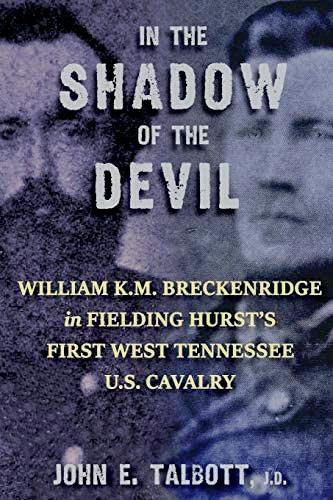
McNairy County’s Civil War history is richer for the diligence of William K M Breckenridge in keeping a journal and documenting the events around him We are richer for its emergence from the shadows of history More importantly, we are more accurately informed now of a man who deserved greatly to emerge from the shadows of Fielding Hurst to take his own place in the history of the American Civil War. To learn more about Breckenridge and this first new voice to emerge from America’s Civil War in decades, you can read In the Shadow of the Devil: William K M Breckenridge in Fielding Hurst’s First West Tennessee U S Cavalry, available in most online book retailers including Amazon, Books-A-Million, Barnes & Noble, Wal-Mart and many more.

 John Talbott
John Talbott
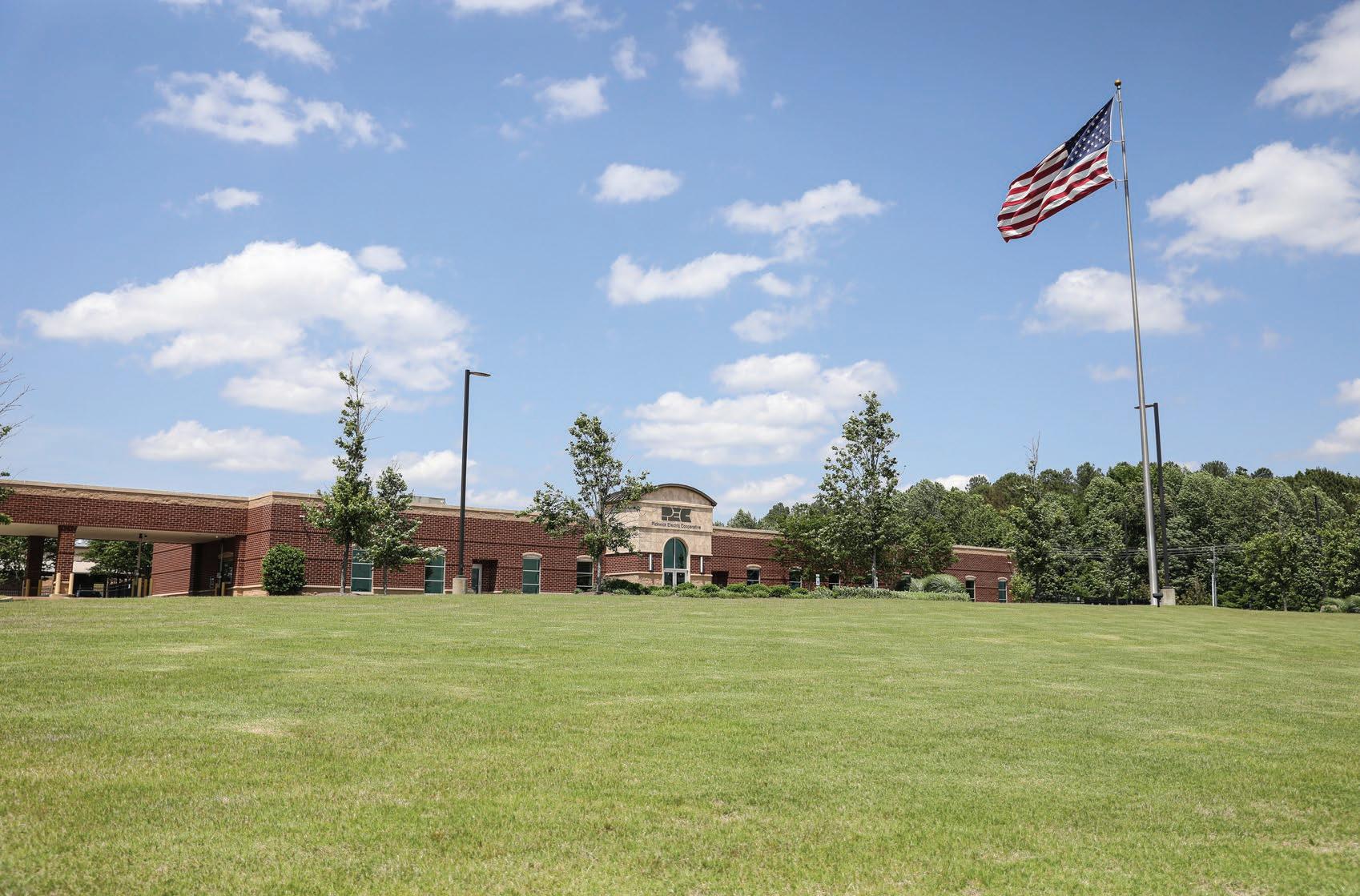

Ada's Country Store, 731-934-9310
JR’s Steakhouse, 731-645-0138
Hillbilly’s Wing Shack, 731-632-2222
Kokomo’s 50s Diner, 731-632-1958
Ole Monterey Cafe, 731-239-5863
Ramer Station Restuarant, 731-645-7772
Grill 57, 731-244-1272
Saw Meal Restaurant & Steakhouse, 731-632-5111
T&T Grocery, 731-645-9922
China King, 731-645-9188
Pappy John’s Original Barbeque, 731-645-4353
The River Barbeque Company, 731-632-4647
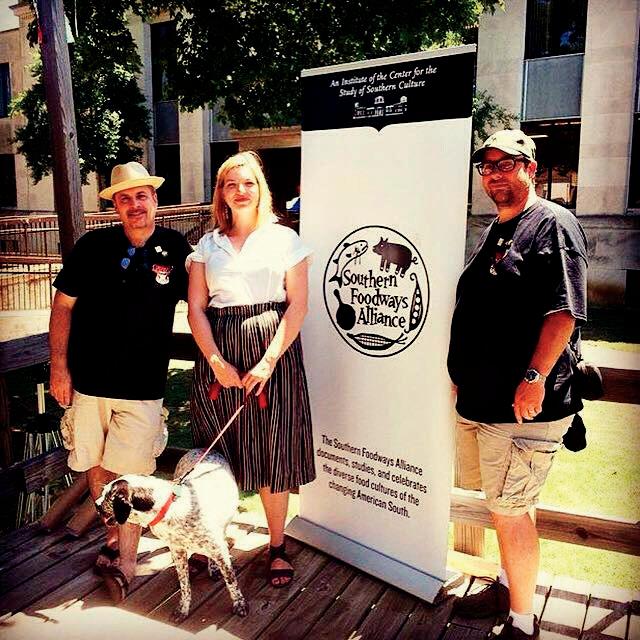
Smokey Joe’s BBQ, 731-645-5188
The Bean Scene, 731- 632-0852
Dannuhcakes Sweet Shop, dannuhcakes@gmail.com
U.S. Doughnuts, 731-982-7023
Burger King, 731-646-1710
Hardee’s, 731-645-5342
Jack’s, 731-632-1620
McDonald’s, 731-645-4488
Sonic Drive-In, Selmer, 731-645-5200
Sonic Drive-In, Adamsville, 731-632-0788
Subway, Selmer ,731-645-6060
Subway, Adamsville , 731-632-0800
Subway, Eastview, 731-645-5163
Atzimba Mexican Restuarant, 731-646-1772
El Palomino Mexican Restaruant, 731-646-0040
Los Aztecas Mexican Restaurant, 731-434-0301
Panchito’s Mexican Restaurant, 731-632-0915
Domino’s Pizza, 731-645-9907
Hometown Pizza, Adamsville, 731-315-1016
Hometown Pizza, Selmer, 731-645-4748
Pizza Hut, 731-645-3200
Top O’ the River, 731-632-3287
Snack Shack, 731-439-0046 (Slugburgers)

Hope's Place, 731-632-1617 (Slugburgers)
Pat’s Cafe, 731-645-6671 (Slugburgers)
Wink’s Cafe, 731-610-2459 (Slugburgers)
Circle T Grilln, 731-439-0708
Southern Foodways Alliance (recommended read)
A HAMBURGER BY ANY OTHER NAME
Words & Photos by Sara Wood (Gravy, Summer 2016)



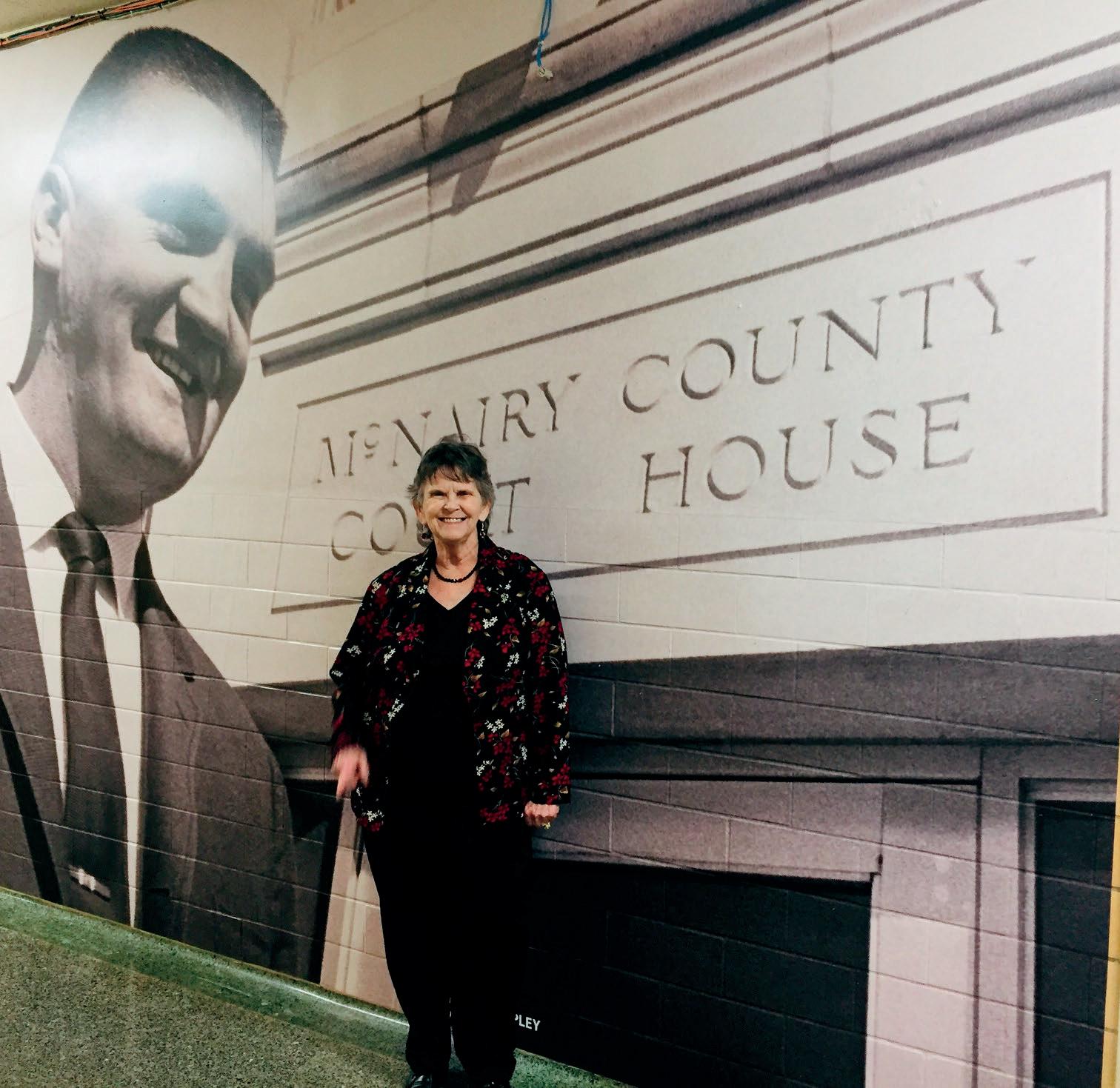
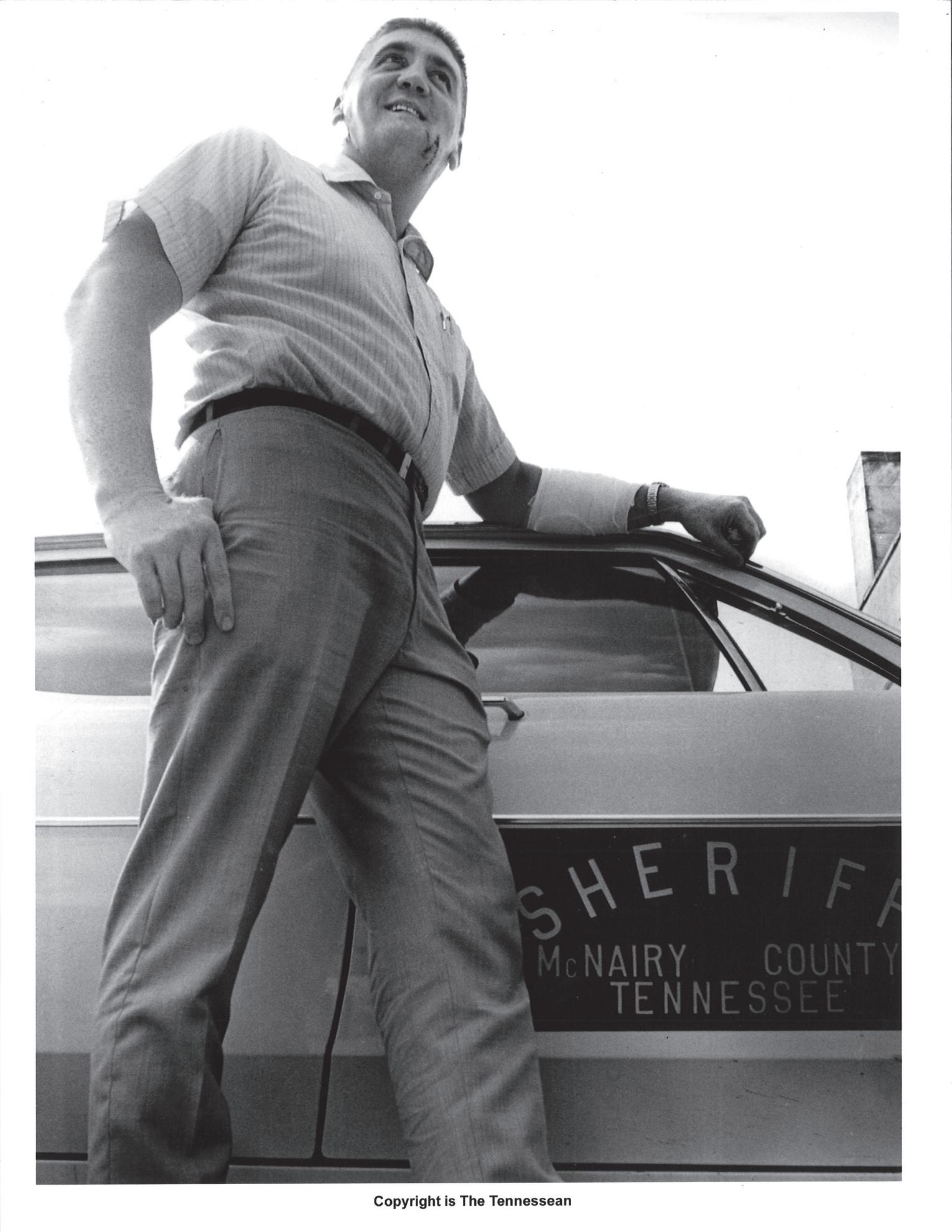
342 Pusser St. Adamsville, TN 38310
1 (731) 632-4080
bufordpussermuseum.com
Tour the home, jail, and office of the legendary sheriff known for his hickory stick-wielding pursuit of criminals The Buford Pusser Home and Museum is a law enforcement museum and stands as a moment in time as if waiting for Sheriff Buford Pusser to return home from another shift serving the public The modest brick ranch home contains the original furnishings, photos, cars, guns and memorabilia of the Pusser family Buford Pusser was the subject of several major motion pictures. The “Walking Tall” movies tell about his life and tragic death. Also on display, are the charred remains of the ’74 Corvette that Sheriff Pusser was driving at the time of his fatal accident. The McNairy County Experience Center contains Buford Pusser's office, the county jail, life-size photos, and memorabilia. The self-guided tour is free and open during the normal business hours of the McNairy Courthouse.
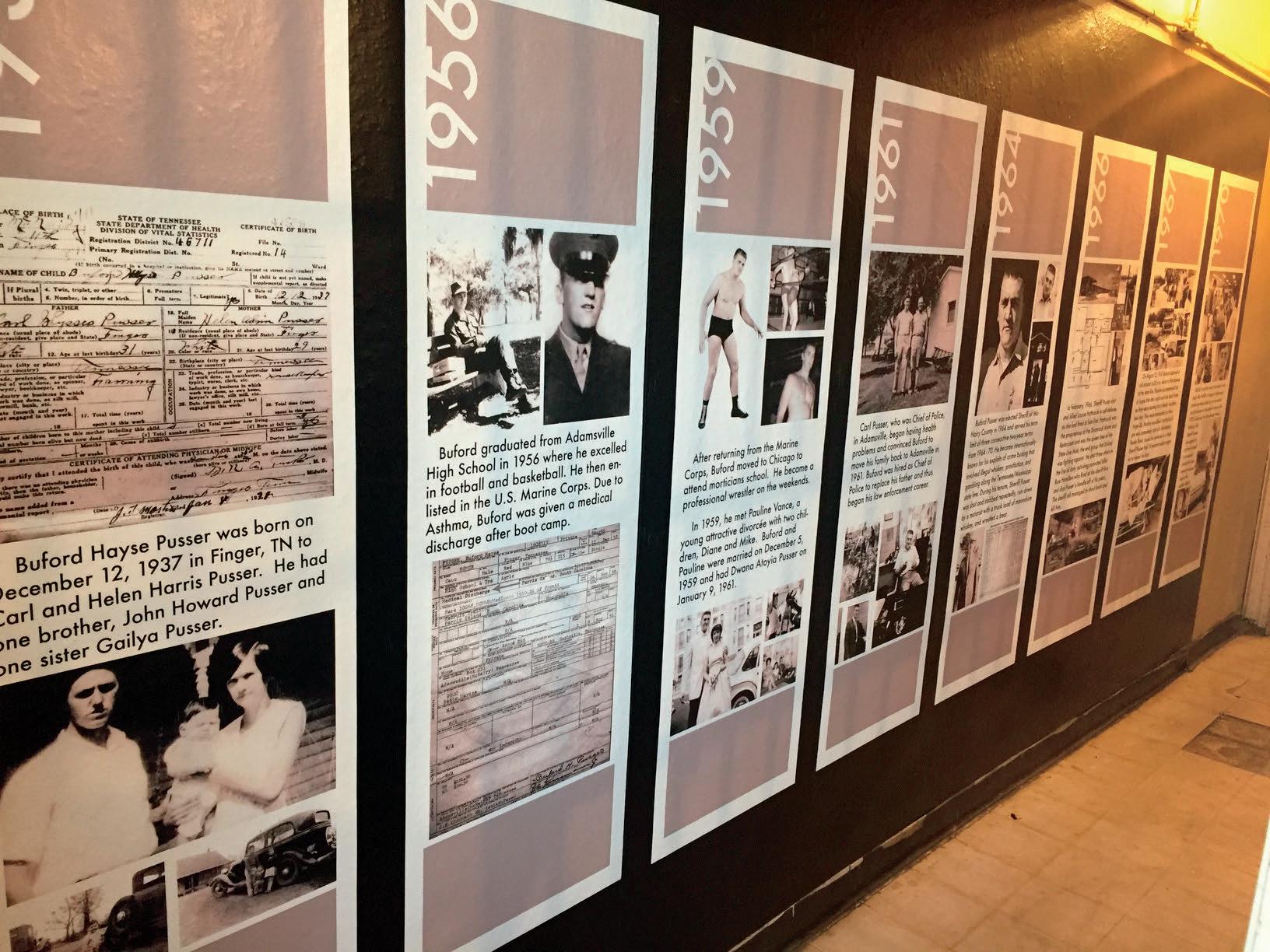
Renaissance on Main’s purpose is to revitalize Main Street Adamsville into a convenient, inviting family destination through the arts and small businesses The Plein Air Art Festival featured artists from across the county and region Professional and amateur painters compete in a “live” painting competition Please follow the annual event on FaceBook


@RenaissancOnMainAdamsvilleTN · Art
A.R.T.S. (Actors Revealing Their Skills) Theatre Group is a local community theatre. Shows are performed at the Marty in Adamsville. The group performs several shows from August to June Auditions are open to anyone regardless of experience who wants to start acting Follow them on Facebook for more information artstheatregroup@gmail com


The McNairy Central Bobcat Band has a stunning record under the leadership of Band Director Ryan Foret. The students work incredibly hard throughout the year to hone their skills and create phenomenal performances both on and off the field, from their marching band season in the fall to their winter and spring concerts. McNairy Central Bobcat Band participated in the 2022 Houma LA Mardi Gras Parades and received the Grand Champion title for all bands.
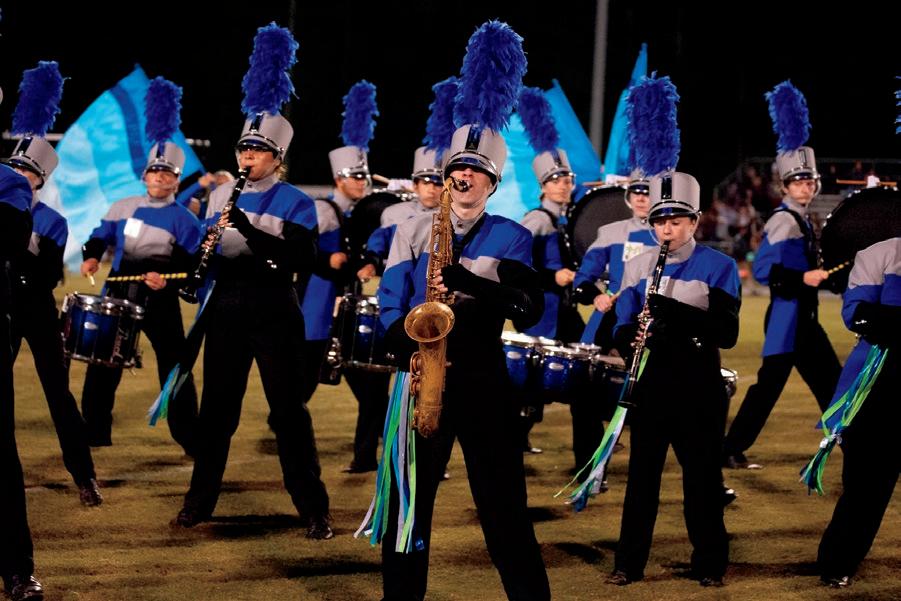
The Adamsville Band is one of the premier performing marching ensembles in Tennessee, being named Tennessee's Marching Band Champion twelve times since 1999. The mission of The Adamsville Band is to develop a student’s lifelong love of music while also helping the students learn valuable life lessons such as teamwork, discipline, creativity, and a strong commitment to excellence


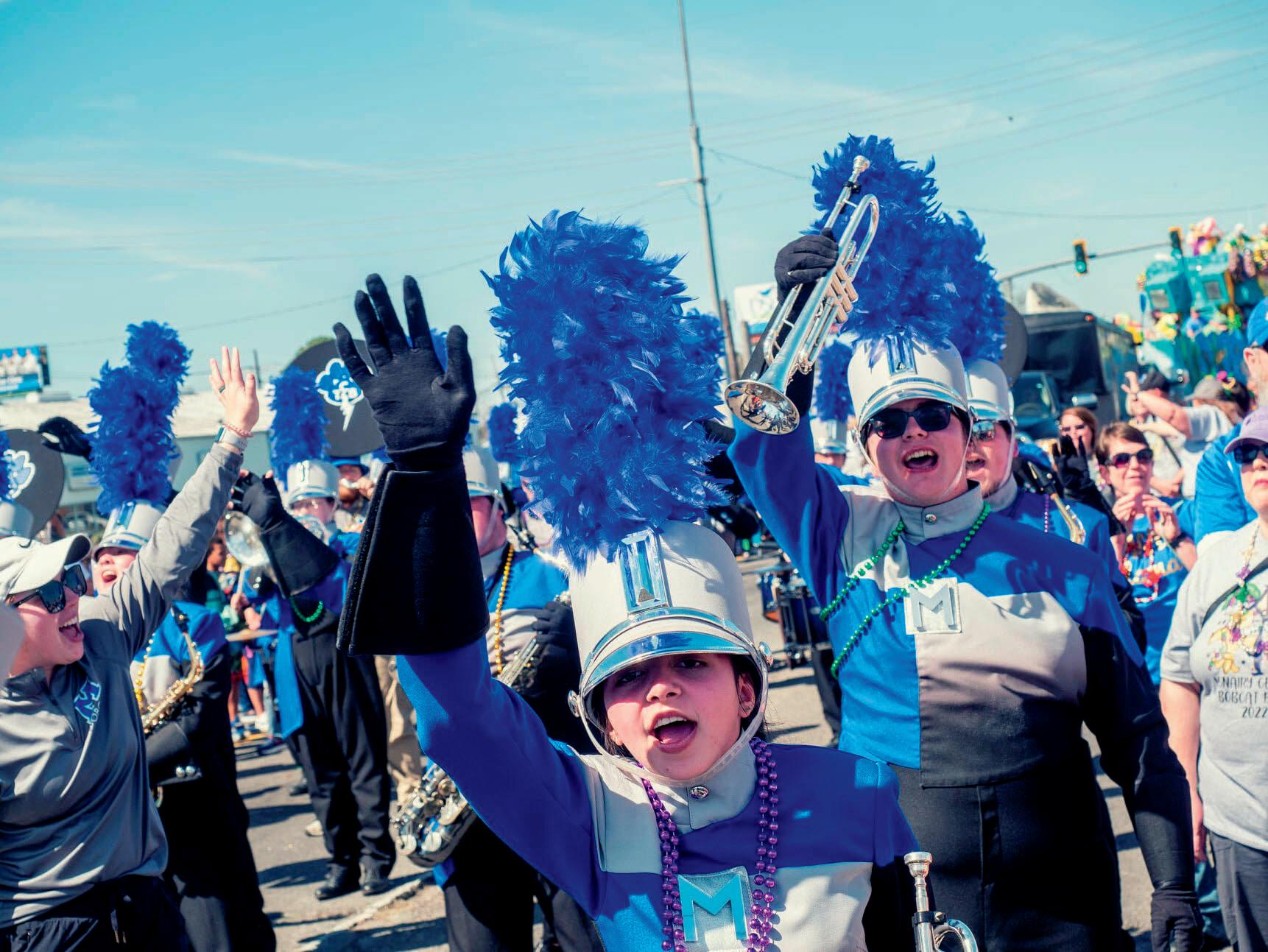

All of District 9 (present-day District 7) in the southeast corner of McNairy County was involved in the Confederate approach to Shiloh, its retreat after the battle, and the month-long siege of Corinth The district’s hamlet of Monterey (present-day Michie), being about halfway between Shiloh and Corinth, was heavily involved in all of these events. It hosted a large Confederate reconnaissance campsite in March 1862; it was the venue for all the Confederate generals to have their final battle-planning meeting on April 4, 1862; it was a hospital site on April 6, and for weeks afterward; and it was the site of many skirmishes during the siege of Corinth in late April and May, 1862 Unfortunately, not many personal accounts from those who lived in Monterey during this time were passed down, and many probably evacuated after the battle of Shiloh, at least for a short time Certainly by the time of the May siege, the Federals were reporting many deserted houses all the way to Corinth
In 1860 there were approximately 880 white people living in the 9th District of McNairy County, Tennessee, along with about 68 slaves. Though most of the whites were farmers, only 13 were slaveholders, seven of whom had 5 or fewer slaves. David Cogdell, living on what was called the Old State Line Road had the largest number of slaves, with seventeen Monterey was the only village of any size, though there were small settlement clusters, usually at crossroads throughout the district The Old Notchy Trail that had been used by buffalo, Indians, and finally settlers, after it became the Congress Road in 1817, ran right along the ridge through the district dividing the watersheds of the Mississippi and Tennessee Rivers. Monterey sat on this ridge, which sometimes gave it the moniker Pea Ridge in official reports from the war, and by area residents Why it was called Pea Ridge is unknown and is sometimes confused with the name of another battle site in Pea Ridge, Arkansas fought just the month before Shiloh It seems the entire ridge area near Monterey was called Pea Ridge to distinguish it from the actual village of Monterey that was named after an 1846 battle in Mexico which the Americans won. It is believed that Monterey in McNairy County came into being around 1847 when the Mexican War battles were still fresh on people’s minds Montezuma in McNairy County and Cerro Gordo and Saltillo in nearby Hardin County also honored Mexican War battles

Historical Perspective on the importance of Monterey, McNairy County, Tennessee during the Civil War, particularly just before and after the Battle of Shiloh
In 1860 amenities and services to be had in Monterey, or near it, in the 9th District included a general mercantile establishment run by surveyor, Benjamin Sanders’s son Franklin, and one to the north nearer Stantonville, run by J E Perkins. Other services for farming included those necessary to keep animals and equipment ready for use There were blacksmiths such as Davidson Miller in Monterey, as well as Charles Davis out in the country Saddlers included A A Tully and G. W. Pratt and his son, Benjamin. Area wheelwrights and millwrights, sometimes called mechanics, included J. H. Rinehart, Joseph T Hobson, T F Short and Joseph Donnell One carpenter, Lewis Wiley, was listed in the 1860 census, but no cabinetmakers nor shoemakers. There was one overseer, John B. Atkins, though it is unknown for whom he worked. All the rest were farmers, tenant farmers or day laborers who would have hired out for cotton picking, corn pulling, cutting and hauling wood, and any number of other myriad jobs needed by those who had no slaves to do the work.
In the 9th District in 1860, Robert Michie identified as a Christian clergyman, probably serving the Clear Creek congregation near Stantonville Two men identified as Methodist clergymen, William Cook and G. W. Williams. Cook, along with A J Carroll, G G Michie and John R Michie were listed as school teachers They all taught in what were known as old field schools, where parents raised a subscription fee to pay the teacher, and often provided a school house for students in their own neighborhoods The curriculum was scanty, probably some reading and arithmetic, along with being able to sign one’s own name, at least The school year usually consisted of about three months during the winter when farm work was minimal Better-heeled parents sent their sons and daughters to board away from home and receive a much better education at places such as Purdy College in Purdy or perhaps the Corona Female College in Corinth. In 1860, those listed as students who would have gone to these type schools were David Cogdell’s son, James M Cogdell, George Chambers who lived at J S Atkins’s home, as well as Amanda Atkins, Reuben’s daughter. There were at least three doctors serving the 9th District. Dr. John H. Cypret, originally from Lawrenceburg, boarded at Benjamin Sanders’s house in Monterey Dr James M Mitchell lived near Monterey, and Dr Isaac Castleberry, both a farmer and a physician, lived in the Acton area. By the time secession fever was heating up in late 1860 and early 1861, Monterey sometimes served as the scene of meetings to discuss the issues Nearby Gravel Hill and Stantonville [Mt. Zion Chapter], as well as Hamburg in Hardin County had Masonic chapters, where District 9 men no doubt gathered and debated, as well Some likely also attended advertised speakings at Purdy on the issues In the presidential election in November 1860, which Lincoln won though he was not on the ballot in Tennessee, the state, and the majority of McNairy County voted for John Bell or Stephen
Douglas, both of Unionist leanings. Lincoln’s election upset and galvanized Tennessee, so that by February 9, 1861, enough rhetoric had been bandied about that a referendum was called to decide whether to hold a convention to discuss secession, and to choose delegates to it. District 9 was one of McNairy’s districts that voted overwhelmingly to hold the convention, along with districts 2 (Rose Creek), 10 (Stantonville), 12 (Enville), 13 (Gravel Hill), and 16 (Milledgeville). The ones in the southeast part of the county were the most populous of the slaveholding districts Approximately 160 households (some headed by women who could not vote) had Monterey as their polling place for District 9 and its results were 95-0 for holding the convention in Nashville. Did this mean there were no Unionists in District 9? Probably not, it just meant that they didn’t come out to vote, or chose to keep a low profile hoping cooler heads would prevail. The overall outcome of the state-wide vote was to not hold a convention.
By the time of the convention vote in Monterey on February 9, 1861, seven Southern states had already seceded from the Union. After Ft. Sumter on April 12 and Lincoln calling for the mobilization of 75,000 troops to quell the rebellion, the four other Southern states seceded, Tennessee being the last one on June 8, 1861 In the secession vote on June 8, 1861 In the secession vote on June 8, McNairy County voted for secession, 1318 votes to 586 votes. The District 9 vote held in Monterey was 145 for secession and 0 against secession Obviously, any Unionist-leaning men in District 9 stayed home There was no turning back, but in the euphoria and glee of establishing a new nation, any doubts were pushed into the background by most people as the locals prepared to whip the Federals quick
The older sons of prominent farmers in the area were the first to volunteer for the army. The earliest units were outgrowths of the militia companies that already existed By May 1861, even before Tennessee seceded, the 154th Tennessee Militia unit in Memphis organized as the 1st Tennessee Volunteers soon after the fall of Ft. Sumter. Of the 10 companies comprising this unit, one was from McNairy County Other early volunteers especially from Purdy signed up in Jackson in June 1861 This was the 13th Regiment of Tennessee Infantry and was led by Purdy son, John V. Wright. By September 1861, Camp Trenton in Gibson County was a major recruitment center for McNairy Countians Later, McNairy County boys, especially after the Conscription law of April 1862 passed, signed up at Corinth or in Alabama after Corinth was in Union hands.
The battles of the summer of 1861, especially First Manassas or Bull Run kept recruitment for the Confederacy high. However, the battles in Missouri and Kentucky late in the year had not gone so well and had introduced the to-be nemesis of the war, General Ulysses S Grant for the Federals
By February of 1862 Union military capacity and offensive strategy in the West became apparent as Fort Henry, Fort Donelson and the city of Nashville fell to combined Federal army and naval operations in quick succession However, when on February 8, even before Donelson and Nashville, three daring Union gunboats went up the Tennessee River past Crump, Pittsburg Landing and Hamburg, the people in McNairy County became alarmed Some McNairy men even went to Corinth to try to find what these boats could mean. It was obvious to all, especially the Confederate brass in the west, that Corinth with its crossed railroads was probably the next goal for the Union army, and the gunboats were putting out feelers for the best way to take it.
In the last half of February and all through March, the Confederates concentrated at Corinth with all eyes toward the Tennessee River Monterey lay in the direct line between Corinth and the principle landing point on the river, Pittsburg Landing. Therefore, on February 28 nine companies of the 18th Louisiana who had only arrived in Corinth two days earlier were sent out toward Pittsburg Landing to set up some artillery pieces on the bluff Accompanying them were Miles Artillery and part of the 1st Alabama Cavalry. They arrived on March 1, and barely had time to roll the guns into place when they saw smoke coming around Diamond Island from the Federal gunboats Tyler and Lexington An overanxious gunner fired too early without the range and only managed to alert the gunboats with their longer range to the Southerner’s position For 3 hours, the gunboats pounded the position The Confederates had retreated to a ravine and held their fire as four small boats came ashore and about 80 Union soldiers advanced toward the ravine When the Federals were near, the Confederates opened fire on them, killing three and wounding seven or eight The Confederates lost 3 killed and several wounded. Thus ended the first Battle of Pittsburg Landing, March 1, 1862
It was late afternoon by the time the battle ended and the 18th Louisiana retreated to the area around Shiloh Church The next day they sent scouts to watch the river and the gunboats reappeared and shelled again, but did not venture to land The Confederates fell back to Lick Creek that night On March 4, they went one mile beyond the village of Monterey on the Corinth road where they could easily scout toward Pittsburg Landing and toward Hamburg, near the two main roads from those places that went toward Corinth Nine companies of the 18th Louisiana camped there and this meant at least 500 men, a significant tent camp. They called the camp “Camp Bush” after one of the officers of the regiment, Captain Lewis Bush They apparently bought food and fodder from the nearby locals since everyone still had plenty at that point. On March 21 the 18th Louisiana went back to Corinth and were replaced at the camp by the 16th Louisiana Again, Monterey was more or less hosting soldiers on its doorstep
Unfortunately, few records have come down to us from either the soldiers or the locals The ones that have show camaraderie among the soldiers and the permanent citizens By mid-March locals such as Benjamin Sanders and the scouts for the Louisiana regiments and the First Alabama Cavalry saw that the Federal army was disembarking and setting up a huge camp at Pittsburg Landing One daring scout, Lieutenant Leopold L Armant of Company E, 18th Louisiana, who was camped at Monterey got close enough to be able to climb a tree and count campfires, and could even hear the Federal voices During the night he clambered down the tree and became a hero for his daring On March 16 units under Brig. General W. T. Sherman probed in the directions of Corinth and Purdy toward the railroads. The Federals were led by Lieut Col Thomas T Heath of the 5th Ohio Cavalry They didn’t get far before they ran into Confederates who sent them bloodied back to Pittsburg Landing. As part of this same probe, either on March 16 or 17, there was an “accidental” meeting between Confederate cavalry from Monterey and Major S M Bowman’s 86-man detachment, Company M of the 4th Illinois Cavalry. Bowman’s group went by night out on the Corinth Road from Pittsburg Landing and had an engagement in what was called the Skirmish of Black Jack Forest The location of Black Jack Forest seems to be in the area encompassed by “6 miles from Shiloh” and “5 miles from the Mississippi line.” This probably placed it north of Lick Creek and more than 5 miles from the actual Mississippi line The Federals who reported this location, at this point may not have known that the Old State Line Road was not actually on the state line. After this engagement, both sides more or less laid low during the next two weeks due to excessive rain
On April 3 Sherman instructed the Fifth Ohio Cavalry led by Col William H H Taylor to move out 6 miles on the Corinth Road, then go south toward Greer’s and capture any enemy pickets In conjunction, he would dispatch an infantry regiment to Greer’s to seize prisoners among the Confederate pickets in order to get information regarding the disposition of Confederate forces. The Fifth Ohio Cavalry left Shiloh at midnight with 400 men going down the Corinth Road They had no guide, so halted until daybreak, then proceeded They stopped at A J Chambers’ house (near Chambers/Fisher Store) to seek a guide. Someone calling himself Dr. Parker was there, but he said he didn’t know the surrounding country and had no horse They got someone else as a guide and went on toward Bartlett Greer’s where they ran across Parker again. They took him prisoner because they knew he had alerted the country to their coming. There was skirmishing on this reconnoiter, but Sherman still believed there were only scattered cavalry units in the area In fact, neither side knew the strength of the other, and bad weather kept each side from gaining much veritable information during the last week f March and early April
 Map by: Cook Coggin Engineers
Map by: Cook Coggin Engineers
Meanwhile, Confederate Generals P. T. Beauregard, Leonidas Polk, William J Hardee, and Braxton Bragg had already gathered in Corinth, and finally, on March 22, General Albert Sidney Johnston got there by coming from Murfreesboro down to Huntsville and across northern Alabama and Mississippi On March 24 the generals huddled and Beauregard argued that they needed to move the headquarters to Monterey to be closer in order to strike the enemy first. Johnston disagreed because all of his scattered units in the Army of Mississippi had not yet arrived He did order the cavalry units to be strengthened at Purdy and Monterey and a line of pickets set to stretch from Bethel to Corinth to guard the Mobile and Ohio railroad. In Monterey, Gen. Joe Wheeler’s Cavalry was one of the reinforcement units Johnston was also grasping for information wherever he could find it He sent out Joseph H Fussell to make rough sketches of the area and he depended on citizens such as Benjamin Sanders and Lafayette Veal to provide information. For example, on March 29 a civilian scouting party led by Benjamin Sanders crossed Lick Creek and found the Federals in force
In Corinth, on April 2, General Johnston and General Beauregard came to the conclusion that they needed to take the fight to the Federals before General Don Carlos Buell could reinforce them at Pittsburg Landing On April 3 a portion of the army set out to the northeast along the Pittsburg Landing road and the Purdy Road for a planned rendezvous at the Mickey (Michie) house by April 4 The weather did not cooperate and, with congestion and confusion in the units, the going was slower than they had planned. On the evening of April 4, the Generals went into camp at Monterey, still 10 miles from Pittsburg Landing Monterey was described as having about a dozen log houses (likely the double pen logwith dogtrot type) and one painted house. Though it is unknown who owned the painted house, it probably belonged to Benjamin Sanders Johnston took one of the log houses for his headquarters Hardee’s men had pushed ahead to Mickey’s and had had a skirmish in which they captured about a dozen Federals who they brought to Johnston in Monterey for questioning One of them was a quite arrogant, but talkative officer, Major LeRoy Crockett of the 72nd Ohio From him they learned that the Federals had no idea an army this size was near and that there had been no entrenching at Pittsburg Landing
Early on April 5 all the Confederate Army started lumbering toward Shiloh, but with myriad snags. No one seemed to know where they should be, and several, including former United States Vice-President, John C Breckinridge, along with Nathan Bedford Forrest, were just arriving from Burnsville By the late afternoon, most everyone had eaten all their rations and it was obviously too late to attack. Everyone was sure the Union army knew they were there, so the discussion was
whether or not to retreat to their strong entrenchments in Corinth while they could Johnston made the final decision that they would attack at daybreak So began the two day battle of Shiloh
David Michie had evacuated and C.S.A. military surgeons had prepared his house as an official hospital by flying a yellow flag By mid-morning of April 6, the house was already full of wounded, and the overflow took up every house in the direction of Monterey, and then Monterey itself where another hospital, as well as all the village houses were taken for the wounded The noted hospital in Monterey was some sort of shed or warehouse that Benson Lossing sketched on April 24, 1866 and labeled “Confederate Hospital at Monterey.” It was near the current water towers.
Late afternoon on April 7 a disorganized and demoralized Confederate Army, minus General Johnston, whose body had been taken back to Corinth earlier that day, started south. From most accounts it was a two-day trip, primarily on the most direct route through Monterey The weather produced torrential rains and the few who bothered to remember the horror of it all later, spoke or wrote of sleeping in sheds or under wagons or under trees. Fortunately, the Federals had little appetite to pursue On April 8 Sherman, on a reconnaissance in force to ascertain whether the Confederates were actually in full retreat, or were re-grouping to attack, made a rude acquaintance with Nathan Bedford Forest at Fallen Timbers The Union Army, though victorious at Shiloh, was in administrative disarray, which took the arrival of Major General Henry Halleck a few days later, to straighten out. In addition, the victors were left with the spoils, literally thousands of dead bodies of men and horses to bury and burn Pursuit of the Confederates would wait
From April 8 or 9 when most of the Confederates got back to Corinth, until April 28, when the three Union armies under General Halleck began their advance on Corinth, units from both sides sent pickets and scouts to try to see what the other was doing Of course, this again put Monterey in the hot seat. Its logistical position, its commanding heights, and it's many converging roads meant that skirmishers on both sides tried to take it or keep it Many small-scale fights took place in and around it In general, the overwhelming strength of the Federal army came up against smaller Confederate cavalry units. There would be shots from both sides and the Confederates would disappear south This happened over and over for half the month of April and all of May Most of the skirmishes only get a mention in the Official Records and scant or no detailed reports filed. On April 17 and May 14 skirmishes took place “ near Monterey” without official reports Two skirmishes that did get reports are identified by the local Atkins family name. On April 26 a skirmish took place at Atkins Mill on Little Lick Creek (southwest of Bartlett Greer’s ford) and east of Monterey The account is minimal,
but interest is raised because of the identification The mill belonged to Ephraim Atkins, one of five Atkins brothers who had come to McNairy County from North Carolina around 1832.An excerpt from the report of Union General Gordon Granger, Cavalry Commander, stated that “4 companies [of the Second Michigan Regiment] under Major Snow, drove in the enemy’s pickets at Atkins Mill Had one man wounded Col. Elliott’s force [Second Michigan] for several days were continually scouring the country toward Monterey ” Also on April 28, Gen John Pope, who had just started with his left wing on the siege of Corinth, gave a report of the Confederate force at Monterey: “Small force, about 2,000 at Monterey, with one or two light batteries ”
The second more significant skirmish involving the Atkins name, took place near the Reuben Atkins’s house at Acton on April 29, 1862. It was part of a larger sweep the Federals were making as they started toward Corinth The reports were filed by Brig Gen Patton Anderson for the Confederates, and Brig Gen David S Stanley for the Federals Patton Anderson, born in Tennessee, was now from Florida, and he, a few days later was heavily involved in the Battle of Farmington David S Stanley was from Ohio, went to West Point, and knew many of the Northern and Southern officers He wrote a memoir in the early 20th century that is caustic and self-serving. An interesting fact from Anderson’s report is that it puts Forrest’s Cavalry, though minus its illustrious leader, at Acton Forrest’s Cavalry had retreated from a skirmish with Pope’s left wing at the Babb house at Liberty, and as it was retreating, heard the artillery at Acton and came to see if they could help. The artillery belonged to the Confederates and after Stanley’s Federals came across Wardlow Creek, they received fire that killed one and wounded several. They retreated back toward Monterey.
By mid-May, the three wings of the Yankee juggernaut were advancing toward Corinth, stopping often to entrench [Halleck had taught entrenching at West Point], but sweeping all the smaller Confederate cavalry units ahead of it. General John Pope’s eastern or left wing hurried ahead on the HamburgCorinth Road and camped at Mt Olivet church at Liberty on April 28 General Buell had the center and took the PurdyFarmington Road. General George H. Thomas had the right wing and was the one going directly through Monterey Sherman held the far right of Thomas’s right wing General Halleck was with the center and right group, along with demoted General Grant. Also in the center was the future president, James A Garfield If one can imagine this great diagonal thrust about 12 miles across, it will be easy to imagine the Confederates skirmishing and escaping in the western direction of the Mobile and Ohio Railroad or south toward Corinth Monterey’s heights were controlled by the Federals from April 29 until the Union army vacated it in 1864
One incident reported from the Confederate side during the siege of Corinth involves Monterey In 1866, from a jail cell in Holly Springs, Confederate spy, DeWitt Clinton Fort wrote a series of letters about his war exploits. His memory, especially of his captors’ names, are not always accurate, but the gist of his story probably is true Fort wrote that he and his brother, Tom Henry Fort, went out on a scout on May 10, 1862.“…five miles from Corinth in the direction of Monterey, Tenn , but inside the enemy lines, Tom and I were captured by a Union scouting party consisting of a Lieutenant and 10 men from the 2nd Illinois Cavalry Regt “ The Forts tried to pass off as Union scouts, but were taken to the field headquarters where they were questioned by General G H Thomas From Thomas’s field headquarters on the way to General Halleck at Monterey, Fort asked to stop at the nearby house of Thomas Mason for a drink of water. Fort was a relative of Mason and knew that through him General Beauregard would learn that Fort had been captured Fort and his brother were taken to Halleck’s headquarters “in a deep hollow between two high hills, at the little village of Monterey.” DeWitt Fort remained in the guardhouse tent at Monterey for 24 hours with two other Confederate prisoners While he was at Monterey he was conducted to Halleck’s tent a second time and was interviewed by Major John C. Key. “I learned much about the strength and movements of the great Union army. It was much greater than I had ever dreamed of felt uneasy for General Beauregard ” He was later taken to Pittsburg Landing where he was imprisoned May 11-June 16, 1862. Later he escaped from a steamboat on his way north to a Federal prison and returned to active scouting duty for the Confederacy
Halleck entrenched on the Old State Line Road near David Cogdell’s house, at Acton near Reuben Atkins’s house, and several times near New Hope and at the Mississippi state line in the 9th District Because of the time taken for entrenching, the Union army’s advance to Corinth was slow This meant that the Confederates ultimately had time to evacuate Corinth The six-weeks siege also gave the 9th District and Monterey an importance that they might have lacked otherwise
Corinth fell into Federal hands on May 30, 1862 and continued to be a Union center of operations under Generals Grant, William S Rosecrans, and Grenville M Dodge until late 1863 While General Dodge was in charge for most of 1863, he established a spy ring that involved Unionist citizens from McNairy County including some from the Monterey area In late 1863 the Federals shifted their focus to Middle and East Tennessee At the same time General Forrest determined to bring several small and scattered Confederate units together. As part of this effort, on February 1, 1864 at Monterey Capt J G Sharp enrolled Company H for the 18th Regiment
Tennessee Cavalry [later the 19th Regiment Tennessee
Cavalry]. Several of the companies in this regiment involved local men from McNairy County and the Monterey area By this time the Federals considered Forrest and those under him guerillas
After May 1862 Monterey and the 9th District of McNairy County endured three more years of war and several years of partisan revenge that was more insidious than when the official armies were there Things were especially bad for anyone who wasn’t a Unionist during 1863 when General Dodge was in charge at Corinth At least two immediate postwar accounts exists that speak of the condition of Monterey at that time Benson J Lossing who was in Monterey on April 24, 1866, made notes and sketches that later became a book in which he gave a sense of the desolation of Monterey just after the war was over It confirmed that most of the residents of Monterey had left or were adversely affected by the presence of official armies in 1862 and/or by regular and irregular units afterward. “On the ridge we came to the site of the once pretty little hamlet of Monterey where the only building that remained was a store-house which the Confederates used for a hospital Near it was a ruined house, around which were the remains of what had doubtless been a fine flower-garden ” About four months before Lossing was in Monterey, John Townsend Trowbridge went through it on December 20, 1865 and wrote in his book about what he saw Before getting to Monterey he made note of the entrenchment near Atkins’s house and the many horse, mule and cattle skeletons along the road He also gave a beautiful description of the view from Pea Ridge: “A crest showed us a magnificent sweep of level country on the west and south, like a brown wavy sea, with tossed tree tops for breakers ” This same view can be seen from the ridge today In addition, on a clear day, one may see the water towers at Farmington and at Corinth, sites of significant battles.

Monterey’s location and history prior to the war was important primarily because it was the seat of the 9th District of McNairy County Its height and location, being halfway between Pittsburg Landing and Corinth, and the role it played in March, April and May 1862 gives it much further importance It was the main reconnaissance camp for the Confederates; it was the final Confederate planning venue for the Battle of Shiloh; it was a hospital site after the battle; and it was a prize in the many skirmishes as the Federals executed their siege of Corinth For these reasons, Monterey needs to be recognized and marked
1888 drawing of Monterey (Michie) by former Hospital Steward Arminius W Bill, who had served there May 8-15, 1862 He got Hardee’s Route wrong in the drawing Only house standing may have belonged to Virgil Sanders, son of Benjamin
 Laquita Thomson
Laquita Thomson
Discover people and places significant to music history for an experience that can only be Made in Tennessee.





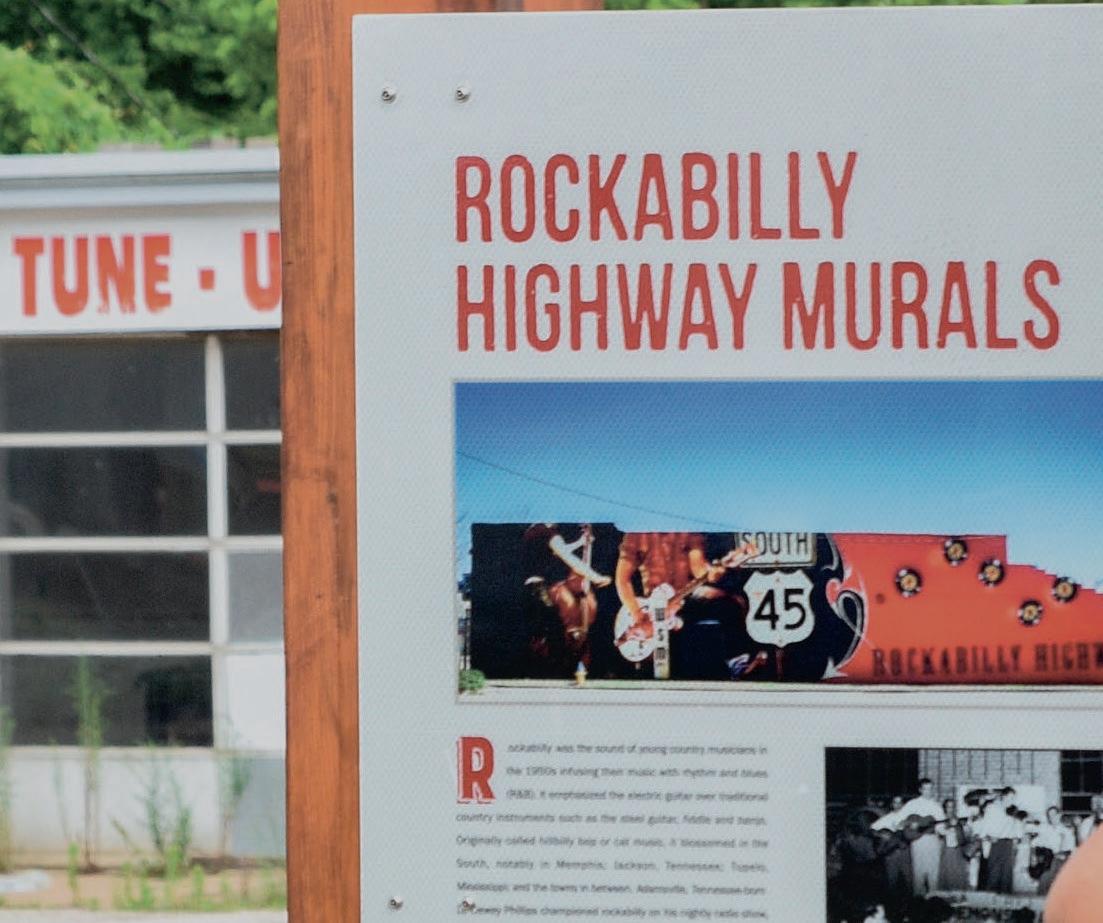
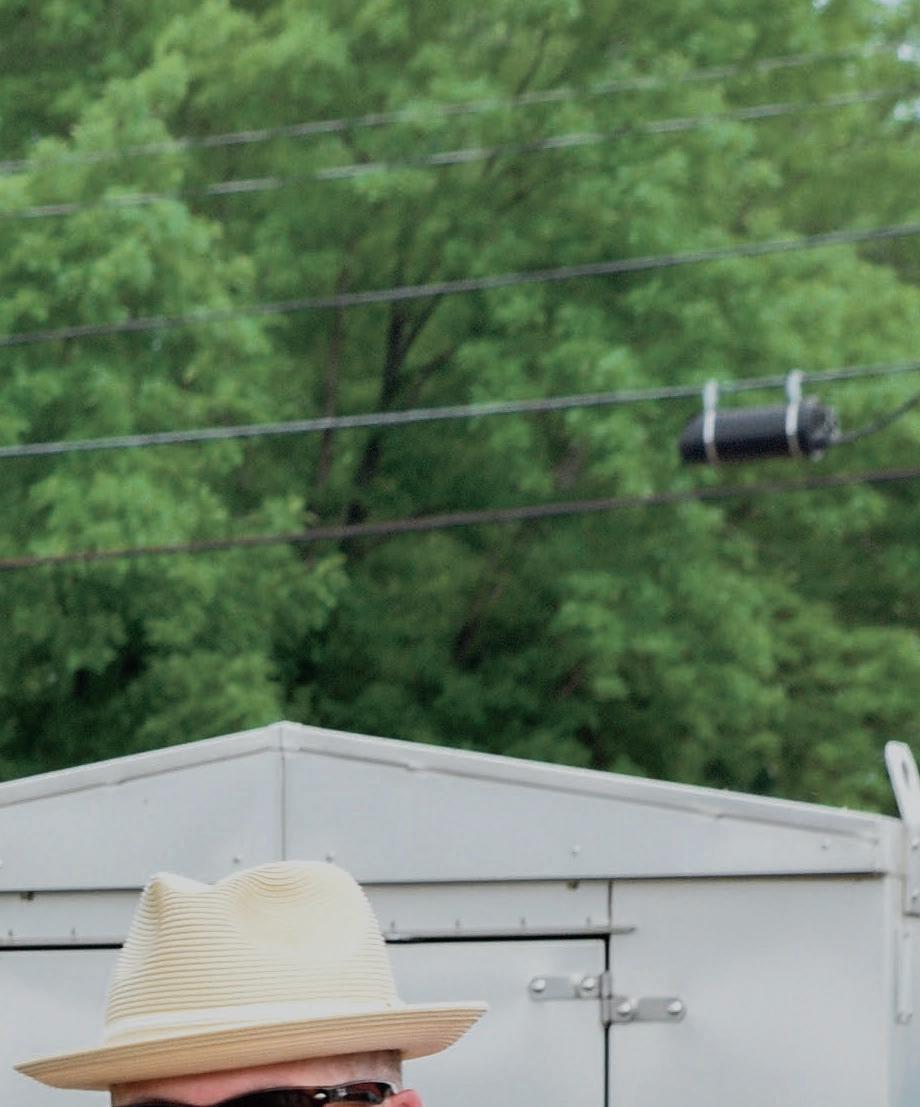
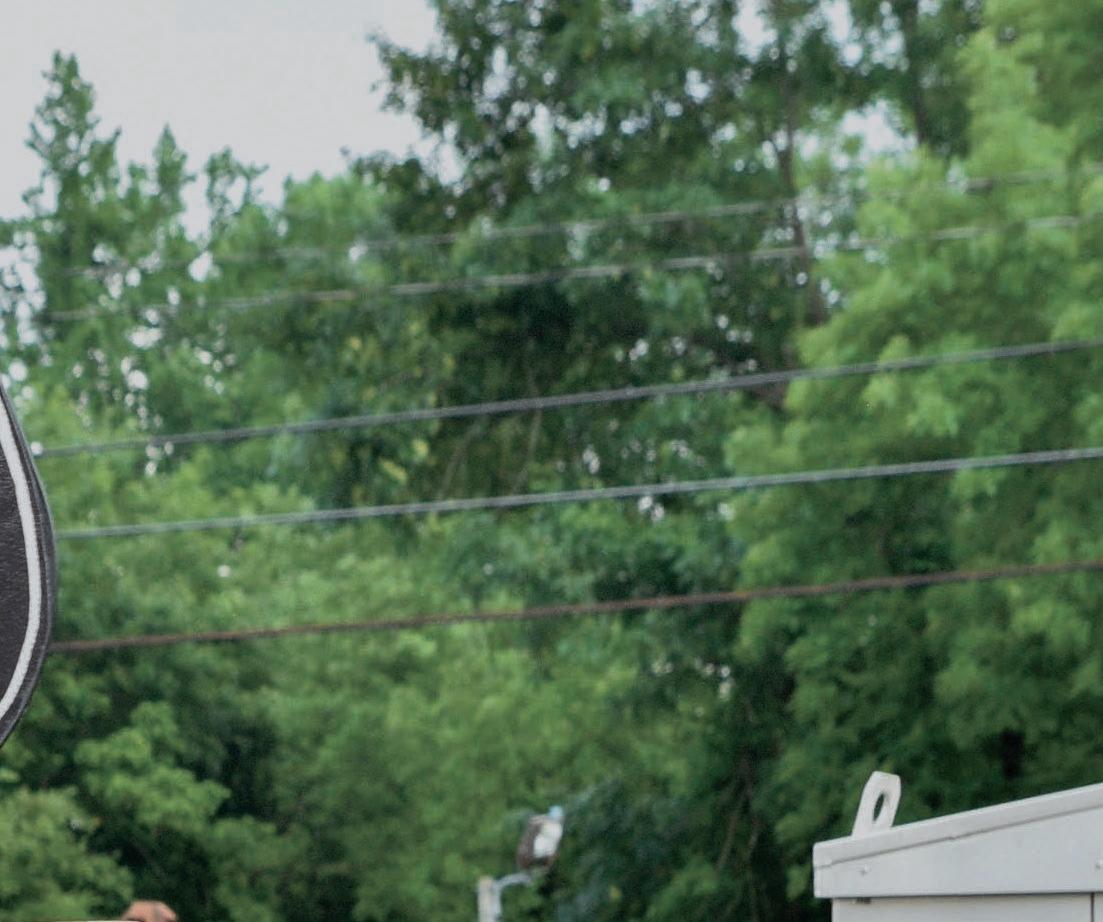
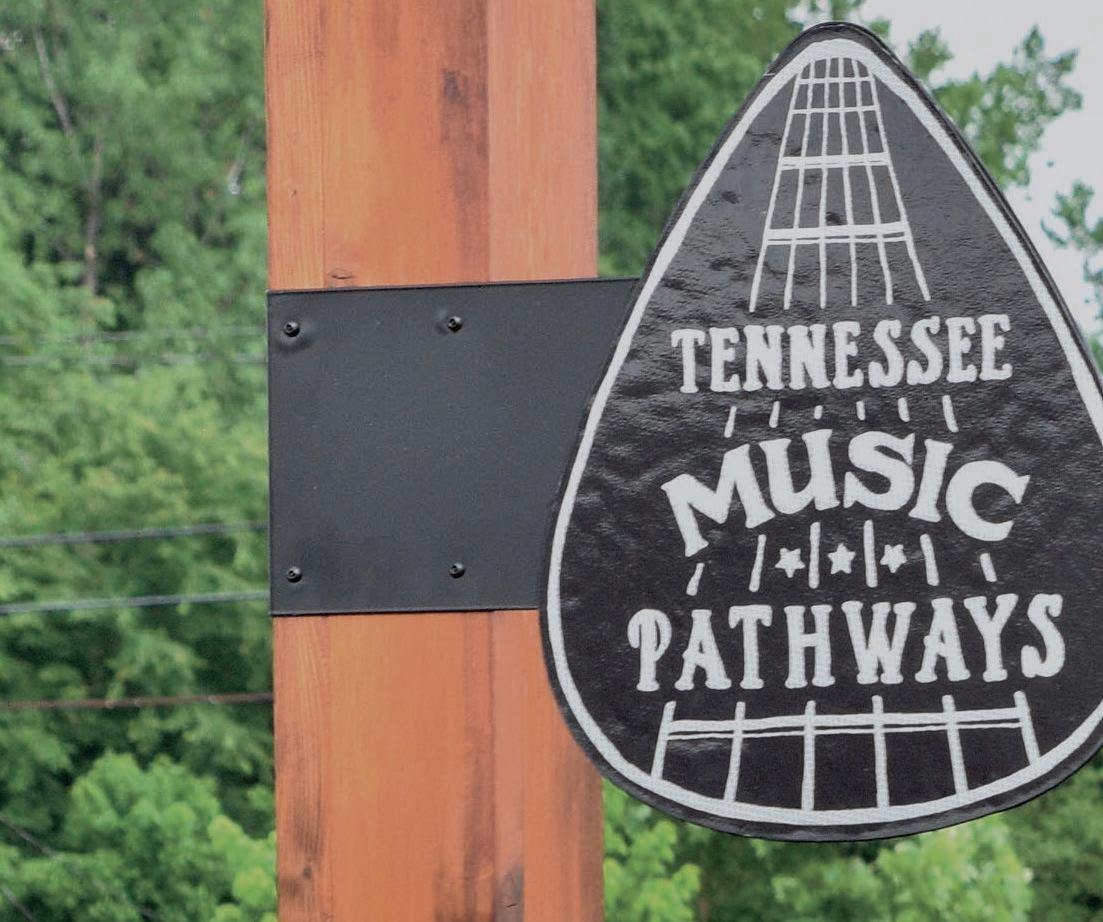
TENNESSEEMUSICPATHWAYS.COM #madeintn




Carl Perkins, one of the founding fathers of rock & roll, began his legendary recording career for Sun Record in 1954 After two fairly undistinguished hillbilly outings, he created Blue Suede Shoes, which changed the face of American popular music It was the first song to top all three charts at once: pop, hillbilly, and R&B. Producer and music historians, Shawn Pitts and Hank Davis made a startling discovery that rewrote music history. Carl Perkins recorded at least two years earlier in a small town studio in rural Eastview, Tennessee. Those records make it clear that he was far from the clueless hillbilly who had to be dragged kicking and screaming into the rockabilly revolution. In fact, one of the four songs he recorded was Good Rocking Tonight, perhaps two years earlier than Elvis Presley cut it at Sun Records!
In October 2019 Bear Family Records released 'Discovering Carl Perkins'. The album contains, for the first time anywhere, these historic, unreleased
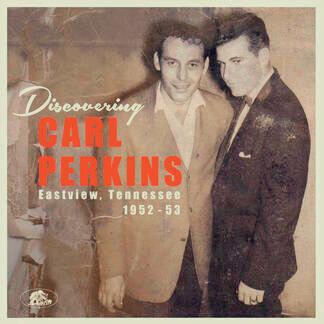

recordings along with several rare outtakes from Carl's earliest Sun Records period The tracks appeared on a ten-inch LP and includes previously unseen vintage photographs and detailed liner notes about the music, and how the local culture gave rise to these historic, one-of-akind recordings. It's quite a landmark event for those interested in early rock & roll history, sun Records, Carl Perkins, and the birth of rockabilly.
Top Right: Staton Littlejohn in his home recording studio in Eastview, TN. Littlejohn's recordings are archived by the Library of Congress and his Perkins Recordings have received international interest and recognition. Bottom Right: Daddy-O Dewey Philips of Adamsville was the voice of the Red, Hot, and Blue program. Dewey had an ear for the best tracks and brought some of the Midsouth's most popular sounds to WHBQ.

Arts in McNairy (AiM) is a live theater, an art gallery, a publishing house, a community history/heritage center, and more! Arts in McNairy fosters an atmosphere where all the arts and artists across disciplines can learn and thrive. AiM was founded in 2001 on the principle that participation in the arts is a cornerstone for the development of a healthy community. Over the years, AiM has demonstrated this principle through arts programs, concerts, performances, festivals, workshops, exhibits, and in-depth exploration of McNairy County’s rich cultural heritage. The organization has been recognized at the local, state, and national levels for excellence in rural arts development and planning. Simply stated, AiM aspires to connect local creatives to the larger community where their gifts may be shared and appreciated.


Arts in McNairy | 205 W Court Ave, Selmer, TN PO Box 66, Selmer, TN 38375 731-645-2671 | artsinmcnairy@gmail.com


The Tennessee music box, or box dulcimer, is one of the most enigmatic musical instruments ever discovered. Little is known about its origins, but it is an ingenious folk instrument made of materials at hand in the counties of southwest and south middle Tennessee. The earliest music boxes date to the 1880s or possibly even the 1870s. Playing and construction techniques were passed from generation to generation, continuing through the 1940s. Community scholars like Ellis Truett of Henderson County, Tennessee, and Gerald Young of Giles County, Tennessee were perhaps the first to appreciate the cultural significance of these crude but beautifully resonant instruments. Scholars such as Dr. Richard Hulan, David Schnaufer, and Sandy Conatser provided valuable research and further insight into their history. An excellent article by Schnaufer and Conatser that first appeared in the Tennessee Folklore Society Bulletin can be accessed online. The essay is reproduced with the permission of
the Tennessee Folklore Society. That issue as well as other back issues of the Tennessee Folklore Society Bulletin may be ordered. In 2015 Arts in McNairy purchased a collection of seven music boxes formerly owned by Ellis Truett (pictured below). His collection of 7 box dulcimers, along with other instruments, and music box documentation are now part of the Arts in McNairy Cultural Collection at the McNairy County Historical Museum. It is the largest, and one of the most significant, collections of Tennessee Music Boxes in the world. The Jackson Area Plectral Society and Needles-n-Pins Quilters of Selmer were generous partners in the acquisition of these Tennessee treasures. The collection is available for scholarly research and inspection by request and is occasionally on display at the museum or Latta Visitor's and Cultural Center, both in downtown Selmer, Tennessee. More information can be found at www.artsinmcnairy.com/tennessee-music-box
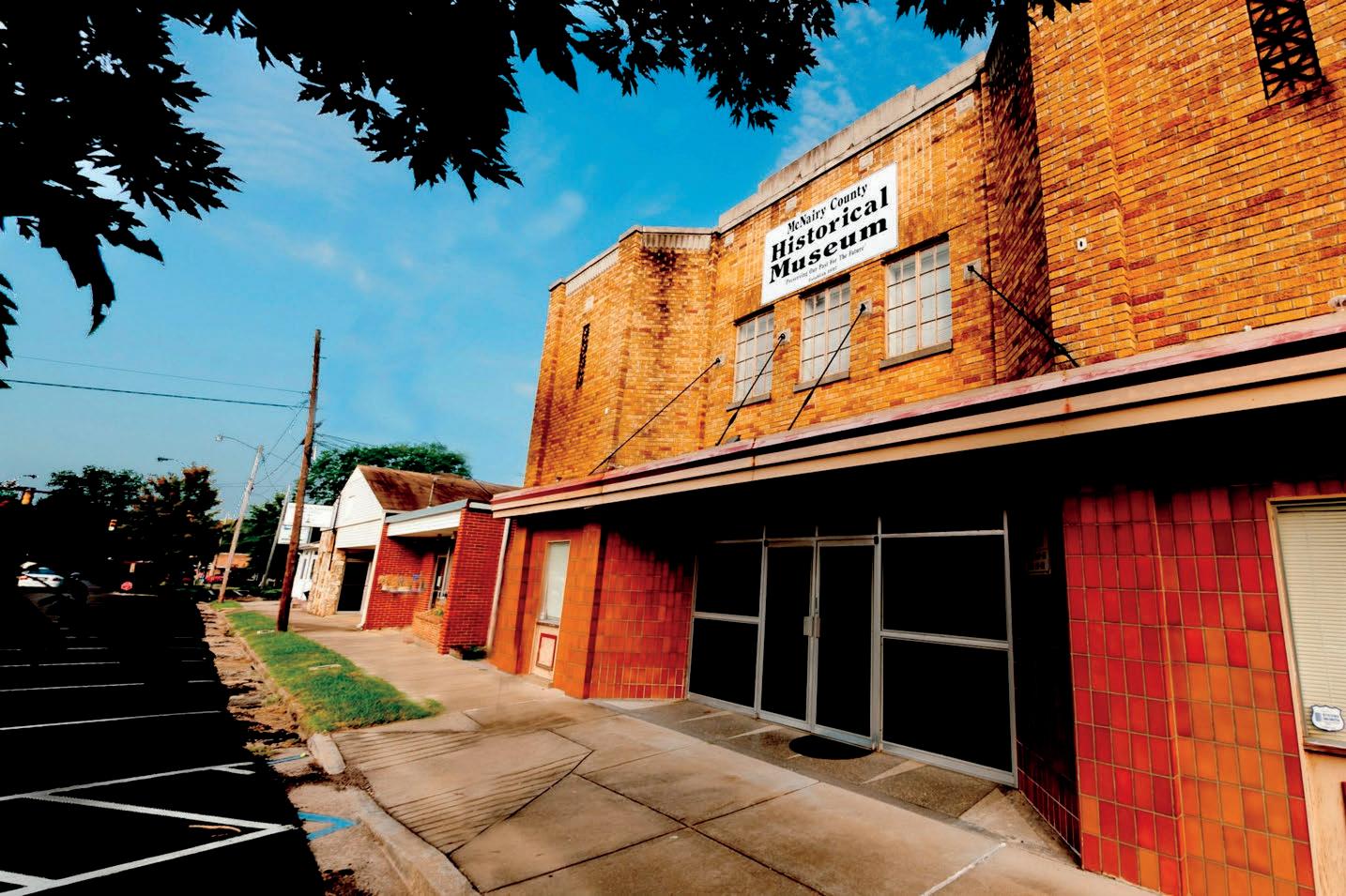
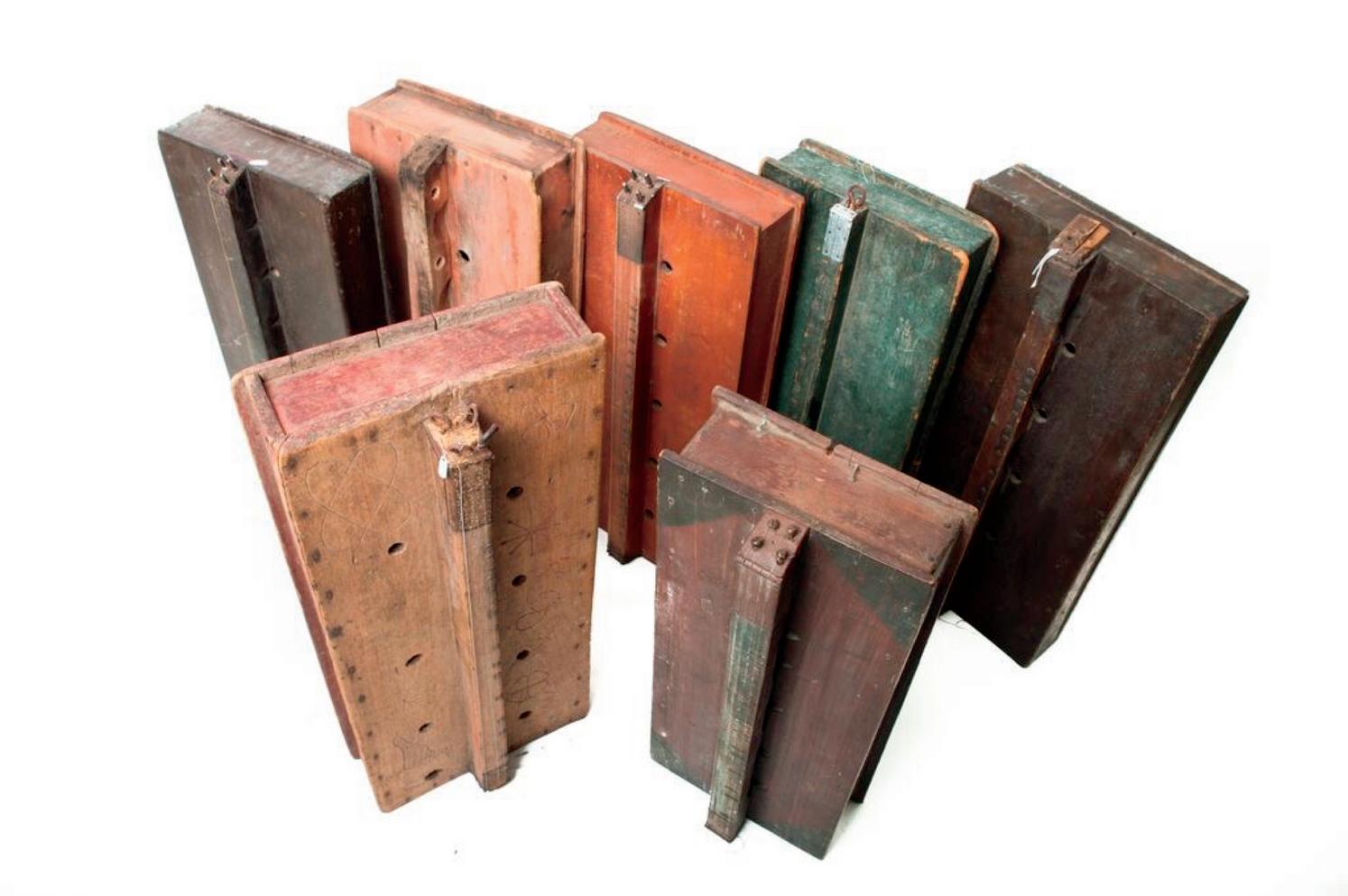
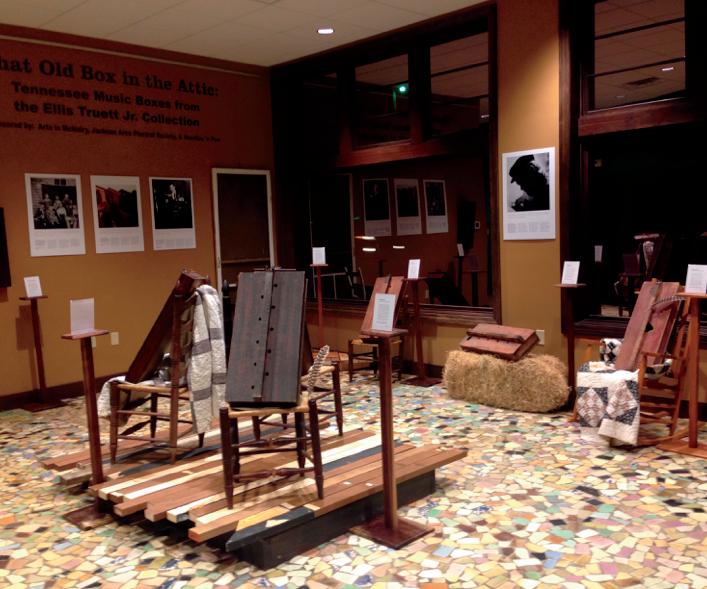

Quilting is a living handcraft tradition in rural America For over forty years quilt makers and quilt lovers alike have gathered each October to pay homage to the beauty and utility of local quilts. The first weekend in October 2022 McNairy County Tourism will host the 42nd Annual McNairy Quilt and Craft Trail at the Latta Theatre located in historic downtown Selmer, TN
 McNairy County Quilt and Craft Trail
McNairy County Quilt and Craft Trail
Hockaday family brooms began in the early 1900s by Will Hockaday as simply a means to make a living through the winter Now, over 100 years later, the Hockaday brooms is now an art form and tradition carried on by Will Hockaday’s greatgrandson, Jack Martin, on the original equipment designed and built some 100 years ago
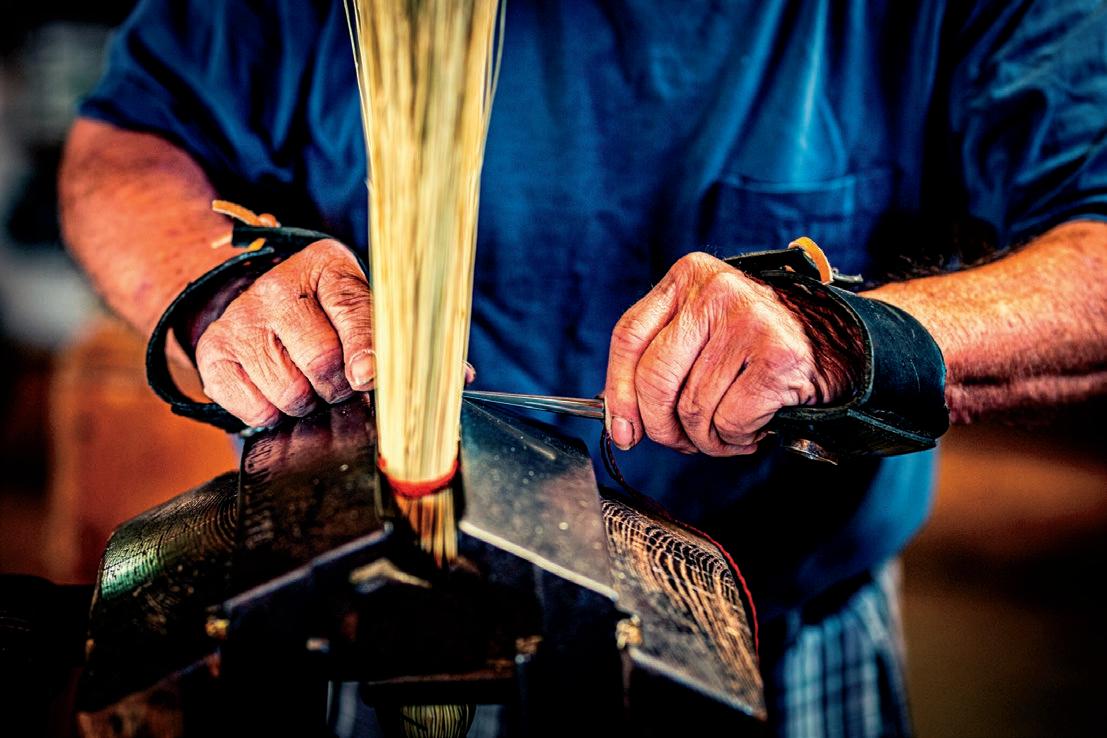
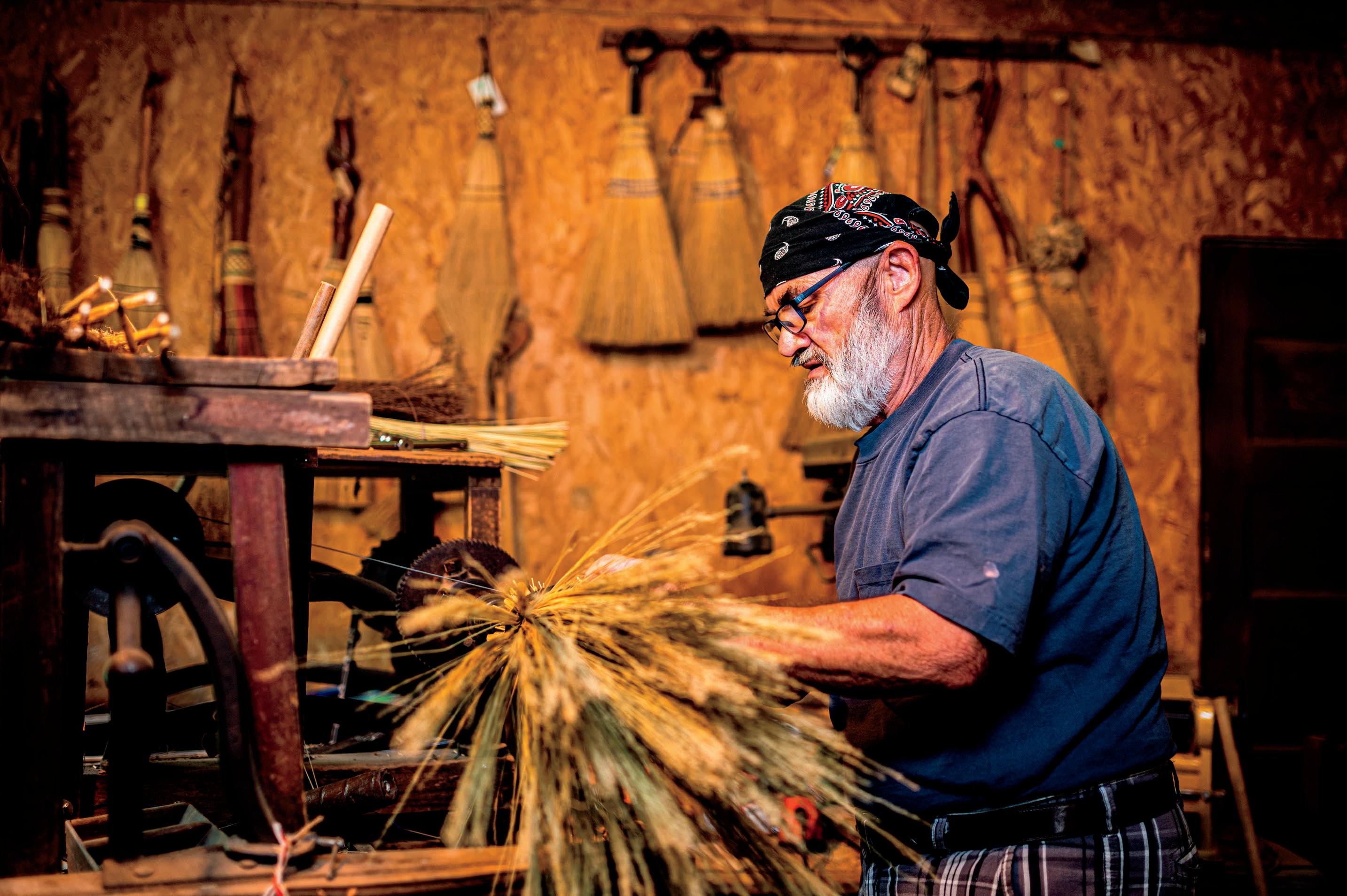
Hockaday Handmade Brooms


2076 Hwy 142
Selmer, Tennessee 38375
For more information or for shop hours, call Jack at 645-4823 or visit hhbrooms.com.

Shawn Pitts
By October 1862 McNairy County was war weary.
However abstract or distant war may have seemed when hostilities first erupted at Fort Sumter in April 1861, by April 1862 armed conflict was a concrete reality in southwest Tennessee and north Mississippi The Battle of Shiloh shocked the nation with its industrial scale carnage and left locals reeling as massive armies moved through the area by river, road and rail. Even the most remote hamlets and isolated farmsteads saw heavy concentrations of troops as Union and Confederate forces vied for control of the vital railroad junction at Corinth, Mississippi
The Confederate retreat after Shiloh was followed by a monthlong siege of Corinth By the end of May, beleaguered Confederate troops were forced to withdraw under constant pressure from a superior Union force. Partisan guerrilla fighting and small heated exchanges between military regulars wore on through the summer months as the Union army attempted to reinforce and hold territory in West Tennessee Meanwhile, U S Grant, commanding from Jackson, Tennessee, was eagerly supplying occupied Corinth as a base of operations to divide the western Confederacy and smoke out Rebel strongholds; Vicksburg was an especially enticing target.
Confederate Generals Earl Van Dorn and Sterling Price meant to confound Grant’s ambitions.
Though it’s variously known as the Battle of Davis Bridge, Hatchie’s Bridge, or more graphically, “Hell on the Hatchie,” the brief, but furious, engagement near current day Big Hill Pond State Park is actually the story of three bridges and a fortunate turn of fate for the Army of West Tennessee The story only makes sense against the backdrop of Van Dorn and Price’s IukaCorinth Campaign of 1862 Their epic military misadventure came to a violent close on the boggy ground of southwestern McNairy and southeastern Hardeman counties, ending all Confederate hopes of maintaining control of the Mississippi Valley. Though its history is largely unknown to many locals, Davis Bridge marked a significant turning point in the American Civl War Of all West Tennessee’s battles, only Shiloh produced more casualties
In mid September 1862, Van Dorn and Price’s armies rendezvoused after inconsequential sparring with Union Brigadier General William Rosecrans at the Battle of Iuka. Van Dorn assumed command of the combined force Price, the more prudent of the two, would probably have been the stronger choice to command The Army of West Tennessee, but Van Dorn was the ranking officer. By late September twenty two thousand men were gearing up at Ripley, Mississippi for an attempt to retake Corinth
On October 1, Van Dorn marched his men north into Tennessee and camped near Pocahontas. Davis Bridge, the nearest Hatchie River crossing, had to be rebuilt before Van Dorn’s men could advance toward Corinth on October 2 Young’s Bridge, just a few miles east on the Tuscumbia River, wasn’t in much better shape. Rather than move his whole army across the rickety structure, Van Dorn assigned a detail of a thousand men to stay behind and guard his lengthy supply train. The plan was to march a lightened force quickly to Chewalla and attack Corinth from the north the next morning
The Battle of Corinth raged from sunup to sundown on October 3. The Confederates made modest gains the first day, driving Union troops back inside their inner defenses, but by noon on October 4 Union General Rosecrans had struck the decisive blow Van Dorn miscalculated the size and tenacity of the Union army and failed to capitalize on several opportunities, losing almost twenty percent of his command in just a few hours of bloody combat
The defeated Army of West Tennessee limped back to Chewalla where Price was mortified to learn Van Dorn had ordered a halt to regroup and circle back to Rienzi, Mississippi in order to mount a fresh offensive on Corinth from the south. Price and his officers feared losing the men, supplies and munitions left behind at the Tuscumbia River crossing and had no reliable intelligence on Rosecrans movements at the rear of the retreating Confederate column To his credit, Van Dorn relented when confronted by Price, reluctantly agreeing to rejoin the vulnerable supply train. The impending Battle of Davis Bridge would be catastrophic, but the divided and weakened Confederate army would likely have been routed had Sterling Price’s judgement not prevailed.
Unbeknownst to the Van Dorn and Price, Union armies were on the move. Grant had ordered
reinforcements to move from Jackson and Bethel Station to Corinth by rail Arriving October 5 to find Rosecrans had repulsed the attack, fresh Union troops pursued the fleeing Confederates They caught up to the enemy’s rearguard just west of Chewalla. In front of Van Dorn’s sluggish column, Union troops under Major General Stephen Hurlbut had marched out of Bolivar with orders to reinforce Rosencrans, or else meet and finish off the Confederates if they were in retreat. Commanding Union officer General Edward Ord, who had been away on an inspection tour, rode through the night to catch up to his 4th Division and assumed command He found Hurlbut already deploying his men into a line of battle along Metamora Ridge, a strategic high point west of the Hatchie, in sight of Davis Bridge.
It doesn’t take a military mind to understand Van Dorn’s predicament. He anticipated the Federal pursuit out of Corinth, but intelligence of Ord and Hurlbut’s movements in his front came too late to mount an effective counteroffensive The Confederate rearguard performed admirably, enabling most of the army to cross the Tuscumbia and rejoin the supply train, but before Van Dorn’s men could secure Davis Bridge, guaranteeing a safe escape route, Ord had seized the advantage Van Dorn was trapped on the swampy terrain between two rivers, while fresh, well supplied Union troops performed a deadly pincer movement from the east and west To make matters worse, in his desperation to retake Corinth, Van Dorn had ordered the bridge at Crum’s Mill, Mississippi the only other Hatchie River crossing for miles destroyed.
The few Confederates who made it across Davis Bridge ran into the teeth of murderous Union artillery and infantry fire from the western heights. Hundreds we captured or killed in short order and the rest were driven back across the bridge or forced to swim the Hatchie as Ord’s men swept down the eastern slope of Metamora Ridge
East of the bridge, the pursuing Union men encountered a densely wooded upslope that hid waiting Confederate infantry Hundreds of men were mowed down in four hours of heavy fighting as they attempted to funnel across the narrow bridge into the lowlands around the river. Ord was injured in the exchange, but Hurlbut took command and performed a flanking action that finally drove the Confederates from their roost.
As night fell, Hurlbut was in possession of Davis Bridge, and Van Dorn was in deep trouble He was saved only by the intuition of the savvy cavalry officer he had ordered to destroy Crum’s Bridge. Hearing cannon fire upriver in the vicinity of
Pocahontas, General Frank Armstrong suspicioned that a contest for Davis Bridge might be underway He suspended operations at Crum’s and immediately dispatched an aide to find Van Dorn. News that the bridge was intact set Price in motion evacuating troops southward down a rough track that barely classified as a road The Army of West Tennessee crossed the Hatchie at Crum’s Mill, narrowly avoiding complete annihilation.

Though Davis Bridge was technically a Union victory, it was a hollow one The short engagement produced almost a thousand casualties, fairly evenly distributed between Union and Confederate troops Rosecrans was eager to pursue Van Dorn’s depleted and demoralized army, but in a rare moment of indecision, Grant waffled He’d lost faith in Rosecrans, blaming him for the Confederate escapes at Iuka and Davis Bridge Nine more months of bloody warfare raged in the Mississippi Valley before Vicksburg finally surrendered to Grant
The Army of West Tennessee spent over a month at Holly Springs, Mississippi reinforcing its depleted ranks, but would never again go on the offensive. A reorganized command was given to Price in December, and Van Dorn was reassigned to a cavalry corp The following May, Van Dorn was shot and killed at Spring Hill, Tennessee. No one, including the amorous general, blamed the jealous husband.
Bitter, partisan skirmishing continued in McNairy County long after the last shots were fired at Davis Bridge In the fall of 1863, Camp Sheldon was built on Van Dorn’s old campsite at Chewalla to house a Union garrison which remained there until the end of the war When it was all over, Hardin, McNairy and Hardeman Counties had the dubious distinction of witnessing some the most horrific scenes of war in the western theater.
 Shawn Pitts
Shawn Pitts

B I G H I L L P O N D S T A T E P A R K
B i g H i l l P o n d S t a t e P a r k r e c e i v e d i t s n a m e f r o m t h e 3 5 - a c r e B i g H i l l P o n d w h i c h w a s c r e a t e d i n 1 8 5 3 w h e n t h e s o i l w a s s c o o p e d f r o m a b o r r o w p i t t o b u i l d a l e v e e a c r o s s t h e T u s c u m b i a a n d C y p r e s s
C r e e k b o t t o m s f o r t h e M e m p h i s t o C h a r l e s t o n R a i l r o a d . T h e e a r l i e s t i n h a b i t a n t s o f t h e a r e a w e r e N a t i v e A m e r i c a n s W o o d l a n d P e r i o d I n d i a n s i t e s ( 8 0 0 B C – 8 0 0 A D ) w h i c h c a n b e f o u n d a l o n g t h e T u s c u m b i a a n d H a t c h i e R i v e r s . D u r i n g h i s t o r i c t i m e s , C h i c k a s a w I n d i a n s l i v e d i n t h e a r e a u p u n t i l 1 8 1 8 w h e n t h e y s i g n e d a t r e a t y r e l i n q u i s h i n g t h e i r t r a d i t i o n a l h o m e l a n d s i n T e n n e s s e e . W h i t e s e t t l e r s m o v e d i n t o t h e a r e a i n t h e 1 8 2 0 s a n d m a d e t h e i r l i v e l i h o o d m a i n l y f r o m a g r i c u l t u r a l p u r s u i t s . Y e a r s l a t e r t h e t e r r i t o r y w a s d e s i g n a t e d a S t a t e P a r k b y t h e D e p a r t m e n t o f C o n s e r v a t i o n f o r r e a s s e s s i n g t h e n e e d f o r r e c r e a t i o n a l o p p o r t u n i t i e s i n 1 9 7 7 T h e p a r k ’ s 5 , 0 0 0 a c r e s o f t i m b e r l a n d a n d h a r d w o o d b o t t o m l a n d a r e s p a r s e l y i n h a b i t e d m a k i n g i t r e s e m b l e a w i l d e r n e s s . G u e s t s v i s i t i n g B i g H i l l P o n d S t a t e P a r k c a n u t i l i z e t h e c a m p s i t e s . T h e r e i s n o b a c k c o u n t r y c a m p i n g a l l o w e d , h o w e v e r , t h e r e a r e s h e l t e r c a m p i n g s i t e s . T h e s e s i t e s c a n h a v e u p t o t e n p e o p l e a t e a c h , t h e r e a r e s i x b u n k s b u t f o u r o r m o r e p e r s o n s m a y s l e e p o n t h e f l o o r . R e c r e a t i o n a l a c t i v i t i e s f o r t h e o u t d o o r e n t h u s i a s t s m a y i n c l u d e f i s h i n g o n t h e o l d B i g H i l l P o n d o r T r a v i s M c N a t t L a k e e q u i p p e d w i t h p h e n o m e n a l v i e w s . F i s h e r s w i l l f i n d b a s s , b r e a m , a n d c a t f i s h t h r o u g h o u t t h i s a r e a . T h e p a r k i s h o m e t o t h i r t y m i l e s o f o v e r n i g h t a n d d a y - u s e t r a i l s c o n s i s t i n g o f f o u r b a c k p a c k t r a i l s h e l t e r s a n d f i v e m i l e s o f h i k i n g t r a i l a n d t w o t r a i l s h e l t e r s l i e s o u t h o f t h e r a i l r o a d w i t h i n o u r h u n t i n g a r e a . V i s i t o r s w i t h a p a s s i o n f o r h o r s e s c a n b r i n g t h e m a l o n g f o r t h e B i g H i l l P o n d e x p e r i e n c e T h e p a r k h a s a p p r o x i m a t e l y 1 4 m i l e s o f h o r s e t r a i l s a n d i s s h a r e d w i t h m o u n t a i n b i k e r s T h e h o r s e s m u s t s t a y o n t h e r e d t r a i l a n d f i r e r o a d s a n d a r e n o t a l l o w e d o n h i k i n g t r a i l s o r o n t h e b a c k o r t h e f r o n t o f t h e
L a k e D a m .
F o r m o r e i n f o r m a t i o n , p l e a s e c o n t a c t B i g H i l l P o n d S t a t e P a r k d i r e c t l y a t 7 3 1 - 6 4 5 - 7 9 6 7 .

Chickasaw State Park is a 1,400-acre park that boasts plenty of recreation: hiking trails, paddle boating, bicycle-friendly roads, primitive or RV camping, cabin rentals, and horseback riding The park has picnic space, pavilions, a playground, and beach volleyball. Chickasaw became a state park in 1955 and before that was one of Tennessee’s 20 New Deal-era parks. Located at 20 Cabin Lane in Henderson, TN. 731-989-5141.
P I N S O N M O U N D S S T A T E P A R K
The park covers more than 1,200 acres and contains at least 15 Native American mounds
Archaeological evidence suggests the mounds were both burial and ceremonial in purpose Pinson Mounds is a national historic landmark and is listed on the National Register of Historic Places
Located at 460 Ozier Road in Pinson, TN 731-9885614
P I C K W I C K L A N D I N G S T A T E P A R K
Pickwick Landing State Park is located just south of Pickwick Dam, 14 miles south of Savannah, in Hardin County. Noted for its excellent water recreation the lake and river offer fishing, boating, swimming, and a marina. Accommodations in the park include a lodge and restaurant, cabins, and camping. In addition to water sports, guests enjoy golfing, birding, picnicking, disc golf, nature walks, and tennis. The park contains 1,416 acres of forested hills and hollows. Located at 116 State Park Lane Counce, TN. 731-689-3129
G
Shiloh Golf Course, Adamsville, 731-632-0678
Selmer Country Club, Selmer 731-645-9915

Adamsville Parks & Recreation, 731-926-5675

Chewalla Basketball League, 731-239-9802
Ramer Community Sports, 731-610-6063
Selmer Parks & Recreation, 731-645-3866
The Selmer Farmer's and Craft Market is open six days a week and is located at the Rockabilly Park in Historic Downtown Selmer. As a Pick TN site, it's a perfect space for farmer's and craft merchants to sell their wares and for McNairy County residents to find locally grown and handmade products. Farmer's set up in the pavilion and crafters set up in Rockabilly Park. Though there is no cost for setting up, vendors must fill out an application and return it to McNairy County Tourism at the Latta. Contact Jessica Huff for more information at (731) 645-6360.
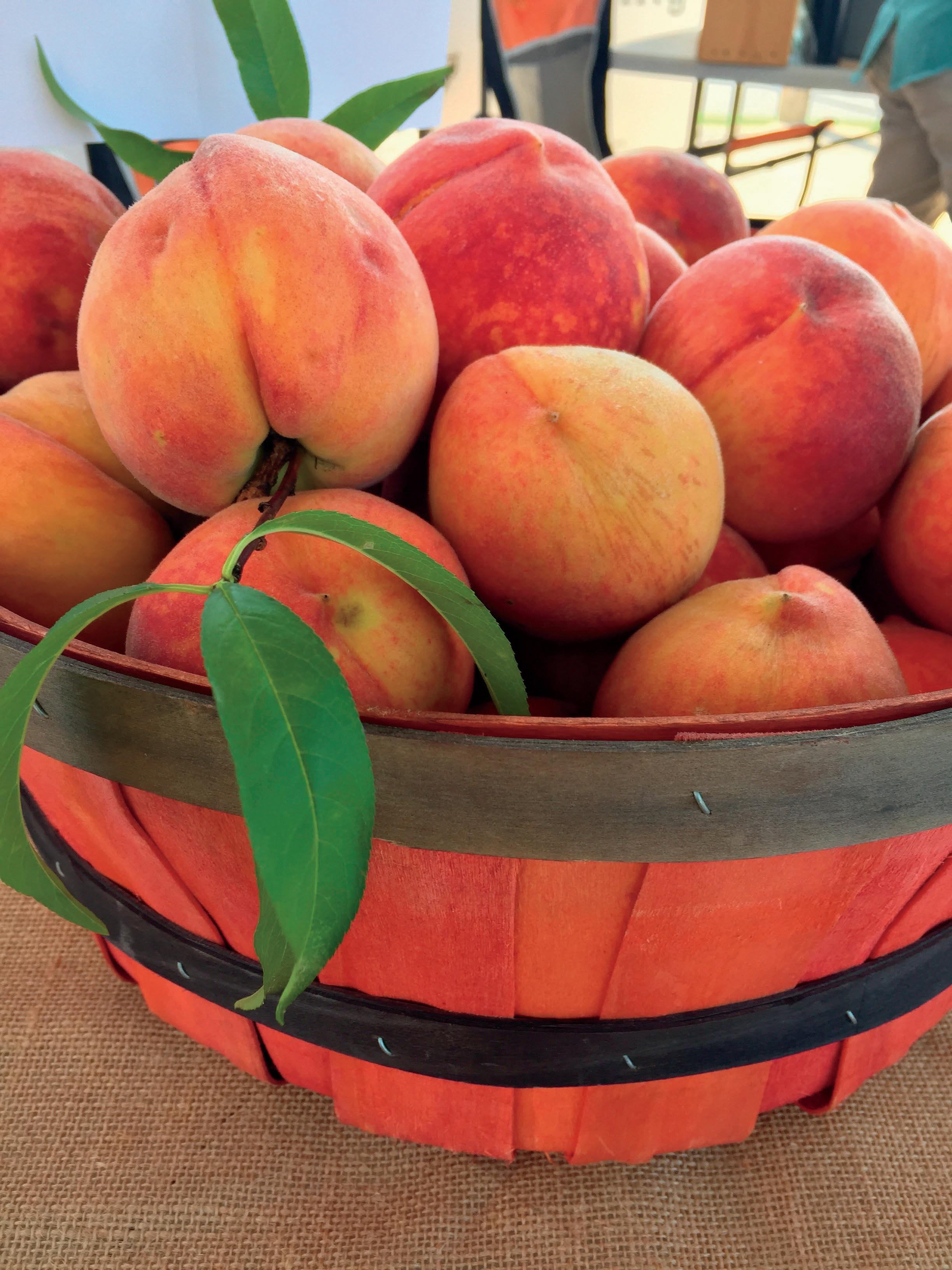









160 years ago, on April 28, 1862, the Union camps along the Tennessee River were bustling with activity The longawaited advance into Mississippi would begin the following day Their target; the strategic railroad crossing in the small town of Corinth.
The three armies; Army of the Tennessee, Army of the Ohio, and Army of the Mississippi, were led by Maj Gen Henry W Halleck At its height this combined “ army group” would muster over 120,000 men present for duty, the largest concentration of Union troops in the field at any time during the war They included 95 regiments of infantry, 49 batteries of artillery, and the equivalent of 8 regiments of cavalry. Not to be forgotten were somewhere between 13,000 and 15,000 horses, mules and oxen

Orders went out to individual commanders with locations each was to reach on the following day, and which roads they were to travel on Every soldier was to carry one-hundred rounds of ammunition distributed through his cartridge box, knapsack and pockets. An equal amount for each man would follow in supply wagons. Each soldier carried three days of rations in his haversack, primarily salt pork, hard tack, and coffee. This food was intended to last them through May 2. A supply system from the river to the front was essential and the logistics to make it happen were like nothing ever attempted in the Western Hemispere The supply line would frequently be stretched to the breaking point For every man and animal to receive his daily food ration would require over 500 tons of food per day. And this was not counting the artillery ammunition, spare parts, telegraph wire, writing paper and hundreds of other essential items needed to supply such a large force in the field
The 28-odd mile journey to Corinth, such a short distance on a map, would prove to be a monumental challenge There were not enough roads leading from one point to the other and several would have to be hacked out of the dense Tennessee and Mississippi wilderness.
Heavy spring rains fell in early May turning gentle streams into roaring rivers Military-grade bridges had to be constructed that could support supply wagons and siege artillery with cannon barrels and carriages weighing as much as 3 tons The rains turned the roads into bottomless seas of mud, requiring miles upon miles of roads to be covered with logs, one laid against the other, in a technique known as corduroying.
There was another factor which would slow the Union advance, and that was the Confederate army Two armies actually, as the Army of the West had arrived from Arkansas and swelled the Southern ranks to some 80,000 soldiers The combined force was led by Gen. Pierre G.T. Beauregard.
The Confederate armies were bitter over their defeats at Shiloh, Tennessee and Elk Horn Tavern, Arkansas and they were itching for another fight Their morale was high, and they were fairly well supplied. They did not cower behind the Corinth earthworks but planned to meet the enemy in Tennessee and make them fight for every foot of ground Everyone believed the coming Battle of Corinth would decide the war. It would begin the following day in the southeast corner of McNairy County.

The armies maneuvered and built mile upon mile of earth fortifications, many of which remain to this day. The Siege of Corinth, the largest siege ever on the American continent, would end on May 30, 1862, with the critical rail crossing falling into the hands of the Union. There would eventually be a battle, four months later, and the results would decide the fate of Corinth for the remainder of the war You can learn more by visiting the Corinth Civil War Interpretive Center, a unit of Shiloh National Military Park, at 501 West Linden Street, Corinth, MS 38834. The visitor center is open 7-days a week, from 8 a m to 5 p m For more information call 662-287-9273

McNairy County is uniquely suited to accommodate industries of all types. With a 45-acre Tennessee Certified shovel ready site industries can look to build a large facility with room for expansion. Our robust utility infrastructure is suited for any industry and with access to highways 45 and 64 as well as proximity to interstate 40 you can be at the largest cargo airport in the world at Memphis International. Our county provides top tier education to our up-and-coming workforce with a 95% high school graduation rate as well as 6 postsecondary higher education facilities within a 50 minute drive. These secondary education institutions help to further develop our success driven workforce. Our local economic leaders and governmental agencies work hand in hand with current and potential industries to provide ease of permitting, establishment and expansion incentives, as well as cooperation in workforce development.

Mark O'Mell
CEO, EDC and Chamber


205 W. Court Ave. Selmer, TN 38375 (731) 645-6360
mark@mcnairy com
Barry Bishop - Vice President, Dr Andrea Mitchell - President, Brooke Redmon, Nick Inman, Martha Rankin, Ashley Hollingsworth - Second Vice President, Grecthen Stackens Dillard, Jessica Huff - Executive Director Chamber and Tourism

Not Pictured: Justin King, Chiko Palomino, Chris Howard, Alan Youngerman and Daniel Vandiver
2 0 2 2 M C N A I R Y C H A M B E R A N N U A L B A N Q U E T A W A R D S
A m e r i c a n L e g i o n P o s t 1 6 2 S e r v i c e A w a r d
A m a n d a F i s h e r
C i t i z e n o f t h e Y e a r
C h r i s W h i t t e n
G o v e r n o r ' s V o l u n t e e r S t a r A w a r d s
L a S h e l l M o o r e , A d u l t
D a r b y B e n t o , Y o u t h
D e a n n a B r a d l e y, W e s t TN B u s i n e s s
M c N a i r y L e a d e r s h i p R i s i n g S t a r
C a l l i e B o d i f o r d , Y o u t h
G a v i n P l u n k , Y o u t h
A s h l e y H o l l i n g s w o r t h , A d u l t
Y o u n g P r o f e s s i o n a l o f t h e Y e a r
K a yl a S t e w a r d
B i l l R a i l - S p i r i t o f E x c e l l e n c e A w a r d Tyl e r S t a n f i e l d
N e w B u s i n e s s o f t h e Y e a r R h o d e s & C o B o u t i q u e
S m a l l B u s i n e s s o f t h e Y e a r Te r r i f i c Ta n s
I n d u s t r y o f t h e Y e a r M o n o g r a m R e f r i g e r a t i o n , L L C
2 0 2 1 O u t g o i n g C h a m b e r B o a r d M e m b e r s H e a t h e r L o t t , D e b o r a h S u l l i v a n , R o b b i e H a r r i s , R o x a n n e M c C l a i n
S p o n s o r s
S t a t e R e p r e s e n t a t i v e R o n G a n t S h a c k e l f o r d F u n e r a l D i r e c t o r s
M a u r i c e H a m m - S p i r i t o f S e r v i c e A w a r d
S t a c y Th o m p s o n
N o n - P r o f i t O r g a n i z a t i o n o f t h e Y e a r
F i r s t B a p t i s t C h u r c h - C o m e t o t h e Ta b l e
C o m m u n i t y E n h a n c e m e n t
R h o d e s & C o B o u t i q u e
T o u r i s m V i s i o n a r y A w a r d
R a m e r R u r i t a n s
S M C R e c yc l i n g US C o n g r e s s m a n M a r k G r e e n B a n c C a r d - J o s e p h P e r k i n s ( 7 3 1 ) 4 3 5 - 0 1 6 7 C o o k C o g g i n E n g i n e e r i n g I n c C o n s u l t a n t s F r e e d H a r d e m a n Un i v e r s i t y
G i l m o r e M e s s a g i n g P a u l F i s h e r O i l C o m p a n y M e l v i n a W i s t e r i a V i n t a g e / R e t r o R e n t a l s
C o r i n t h C o c a - c o l a B o t t l i n g W o r k s D a r t s C a r t s
The Governor's Volunteer Stars Awards (GVSA) is an initiative from Volunteer Tennessee that seeks to recognize outstanding volunteers from each of Tennessee's 95 counties. Participating counties recognize one outstanding youth and one outstanding adult volunteer. The Governor’s Volunteer Stars Awards also recognize one business and one non-profit from each of Tennessee’s three Grand Regions for their outstanding community involvement and service. The 2022 Governor's Volunteer Stars Awards are Lashell Moore, Adult, Darby Benton, Youth and Dannuahcakes Sweet Shop, West Tneessee Business For more information contact County Coordinator, Jessica Huff at (731) 645-6360.



 LaShell Moore, GVSA Adult
Darby Benton, GVSA Youth
LaShell Moore, GVSA Adult
Darby Benton, GVSA Youth
McNairy Leadership is a local youth and adult leadership program organized by the McNairy County Chamber of Commerce and Tourism. McNairy Leadership’s purpose is to identify, encourage, and equip community-minded youth and adults who want to become more involved, who want to help McNairy County become a better place, and who are willing to embrace leadership opportunities. The youth leadership class, that’s juniors from McNairy Central High School and from Adamsville High School. Each year the youth and adult groups participate in team-building activities, read leadership material, and visit local businesses, services and attractions while learning about topics such as agriculture, tourism, non-profits, education and healthcare, economic development, and local government. The final trip is to the Tennessee State Capitol in Nashville where Leadership learns about state government. The groups are tasked with completing a community project. In addition to the McNairy Leadership groups, McNairy Chamber has partnered with McNairy County Schools and UT Martin WestStar to offer an African American Leadership course to current MCHS and AHS sophomores. The Chamber will host the event again in 2023. For more information go to www.mcnairy.com/mcnairy-leadership


 Joshua Williams - MCHS Samaria Vance - AHS
Adamsville High School
Hayden Hunt, Jessica Harpole, Audrey Shourd, Macy Brown, Olivia Daniel, Kaylie Williams, Kayla Mast, Laci Alexander, Conner Clapp, Jayln Jones, Lauralee Whitley, Scarlett Bright, Katie Tears
McNairy Central High School
Joshua Williams - MCHS Samaria Vance - AHS
Adamsville High School
Hayden Hunt, Jessica Harpole, Audrey Shourd, Macy Brown, Olivia Daniel, Kaylie Williams, Kayla Mast, Laci Alexander, Conner Clapp, Jayln Jones, Lauralee Whitley, Scarlett Bright, Katie Tears
McNairy Central High School
1 Plumbing Company Inc
ABB
Action Realty
Adamsville Healthcare & Rehab
Adamsville Industrial Development Board
Advantage Insurance
AHC McNairy Co Senior Living & Rehabilitation
All City
American Legion Post #162
American Johnny
AT&T
B & B Propane Gas Co., Inc.
BancorpSouth
Beauty Bar, Michelle O'Neal Chambers
Better Source Supply
Bodiford White, Insurance
Bradley P. Gray/Liberty National
Breath of Life Yoga & Therapy
Broken Rose Tans, Etc.
C&B Linen
Cato Fashions
CB&S Bank
Centennial Bank
Central Bank
Chambers Insurance
Circle T Grilln
City of Ramer
Cook Coggin Engineers
Corinth Coca-Cola Bottling
Crazy K Ranch
Creekside Climate Controlled Storage
Cross Heating and Air
Cybertech Systems
Dannuhcakes Sweet Shop
Danny Roberts Heating and Air
Darren Bowers FIC, Modern Woodman of America
DeBerry Drugs
Deusner & Kennedy Law Firm
Do All Custom Machining & Tooling Co.
Dodd Eye Clinic
Dolphin WaterSlides Inc.
Eagles Nest
East Main Pharmacy
Edward Jones, Sam Vise, AAMS
El Palomino Mexican Restaurant
Express Employment Farm & Home Realty
Farm Bureau, Ronnie Moore
First Class Storage
First United Methodist Church
Flowers Repair Service
Fullwood Dental Clinic, LLC, Dr. Ronnie Fullwood
Fully Loaded Food Truck
Godwin & Associates, PLLC
Godfrey Insurance
H&R Block
Hagy's Catfish Hotel
Hamilton Ryker
Henry Furniture and Appliances
Hollingsworth Locksmith
Home Banking Company
Home Comfort Heating and Cooling
Hope Vineyards
Huffoto
Ice Cream Shack
Independent Appeal
Inman Brother's Service Center & Wrecker Service
Jackson State Community College
Jesus Cares - McNairy County
Jones Exhaust
K & V Services
King's Auto Parts
Lakeview Baptist Church
Lamar Advertising Company
Larry Raines Realty
Lashlee-Rich Inc.
Lawson Welding
Legacy Hospice
Liberty National, Bradley P. Gray
Lifeline Blood Services
Lifespan Health
Life Wind Covenant Church
Los Aztecas Mexican Restaurant
Lott Family Pharmacy
Lott's Tanning
Loyal Order of Moose
Magnolia Regional Hospital
Mammy's Soap Company
Manpower
Mary Lou Johnson Foundation
MAS Components and Coatings, LLC
McDonald's
McNair Beauty Supply
McNairy Central High School
McNairy County Board of Education
McNairy County Carl Perkins Center
MHDS- Selmer
McNairy County Early Literacy Foundation
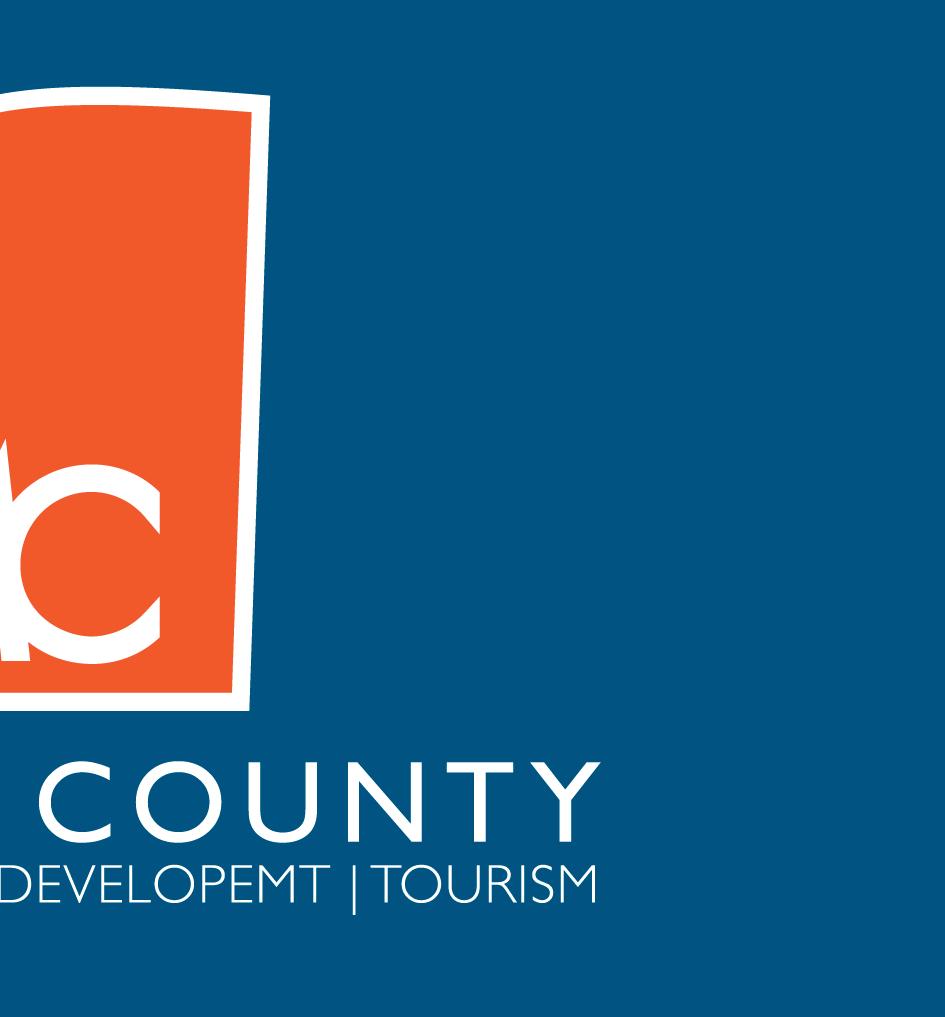

McNairy County Farm Bureau Insurance
McNairy County Friends of the Library
McNairy County Government
McNairy County Government Annex Building
McNairy County Historical Society
McNairy County Libraries
McNairy County Literacy Council
McNairy County News
McNairy County Soil Conservation
Mid-South Family Farms
Mid-South Farmers Co-op
Mid-South Garage Doors
Midtown Pharmacy
MindGamez
Miss Maggie's Children's Consignment Store
Mitchell Eye Center, Dr. Andrea Mitchell
Monogram Refrigeration LLC
Mulberry Dental, DBA Jackie S. McClain, DDS
Nichole Park Photography
North End Wine & Spirits
Office Pro
Owl Creek Lumber
Paul Fisher Oil Company
Pickwick Electric Cooperative
Pierce and Company Boutique
Pink Logistics
Quality Iron & Steel, LLC.
Quinco Mental Health Center
Ramer Family Health Care, Dr. Barton Chase
III
Raphael's Brazilian Jiu-Jitsu
RAYCO
Redmon and Redmon
Regions Bank
Requisite Ink Toners, LLC
Rhodes and Co Boutique
Rhodes Travel Company
River City Concrete
Rumor Has It Beauty Bar and Advanced
Cosmetics
Selmer Chiropractic, Dr. Shawn Pitts
Selmer Collision Repair
Selmer Finance Company
Selmer Flower Shop
Selmer Golf & Country Club
Selmer/McNairy County Industrial Development Board
Selmer Parks and Recreation
Selmer Quick Stop
Selmer Smiles, Ron E. Bell, DDS
Selmer Tobacco Beverage Mart
Selmer Townhouse Apartments
Shackelford Funeral Directors of Selmer
Shelter Insurance- David Goodman
Silicon Ranch
Simpson & Simpson Law
Skyline Eye Clinic, Dr. James Smith
SMC Recycling
Smith & Lambert CPA
Smokey Joe's BBQ
Sneak-A-Peak Boutique
Sonic of Adamsville
South Second Salon
Southern Realty
SP Designs
Star Physical Therapy
Steve Sweat Body Shop
Stockdales Selmer
Subway
Taco Bell
Tennessee Coil Springs & Stamping
TN College of Applied Technology - Crump
Terrific Tans
Terry Abernathy Attorney
Terry Wood Law Office
The Bank of McNairy
The In
The Loft on Court - Lower Level
The Millennium Falcon
The Hair Shack Salon & Gift Shoppe
Top Nutrition
Town of Bethel Springs
Town of Selmer
Town of Stantonville
Trailhead Media
Trinity Medical Clinic, LLC
Tru-Savers Hardware
United Industries
US Donuts
UTM McNairy County/Selmer Campus
UT Martin/West Star
Wal-Mart
Weaver Communications
West TN Healthcare / Primecare
West TN PBS
White & Associates- Selmer Agency
Wholesale Flooring of McNairy, LLC

Wilson Family Dentistry, Dr. Greg Wilson
Without Borders Nutrition
Yachad, LLC
Personal Memberships
Linda Hamm
Jai Templeton










